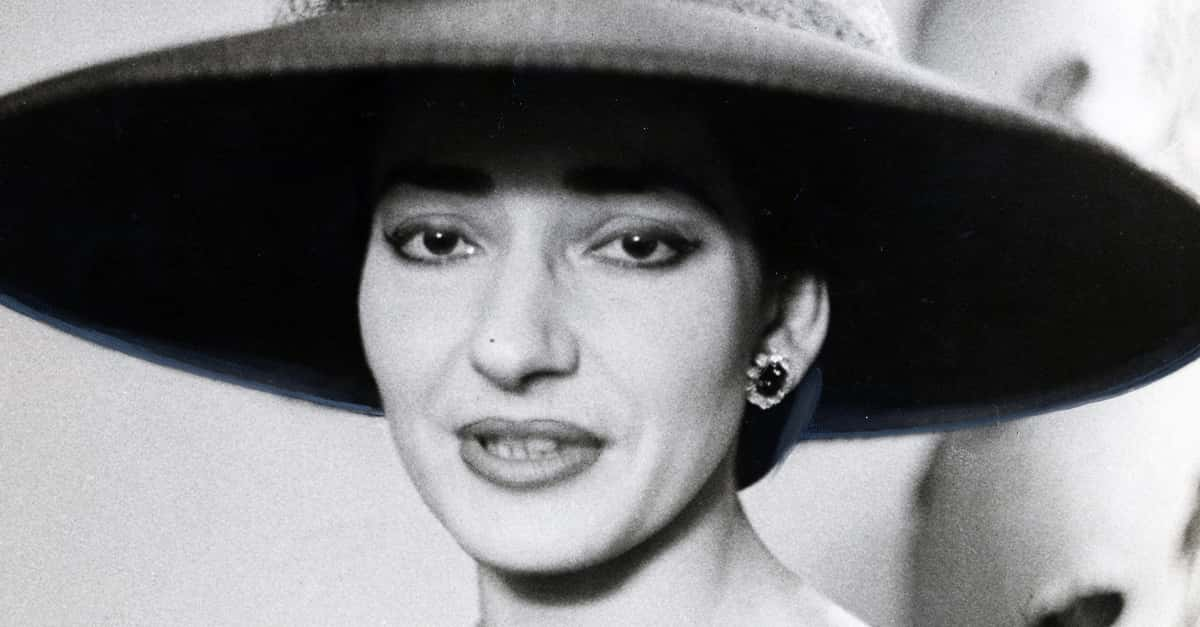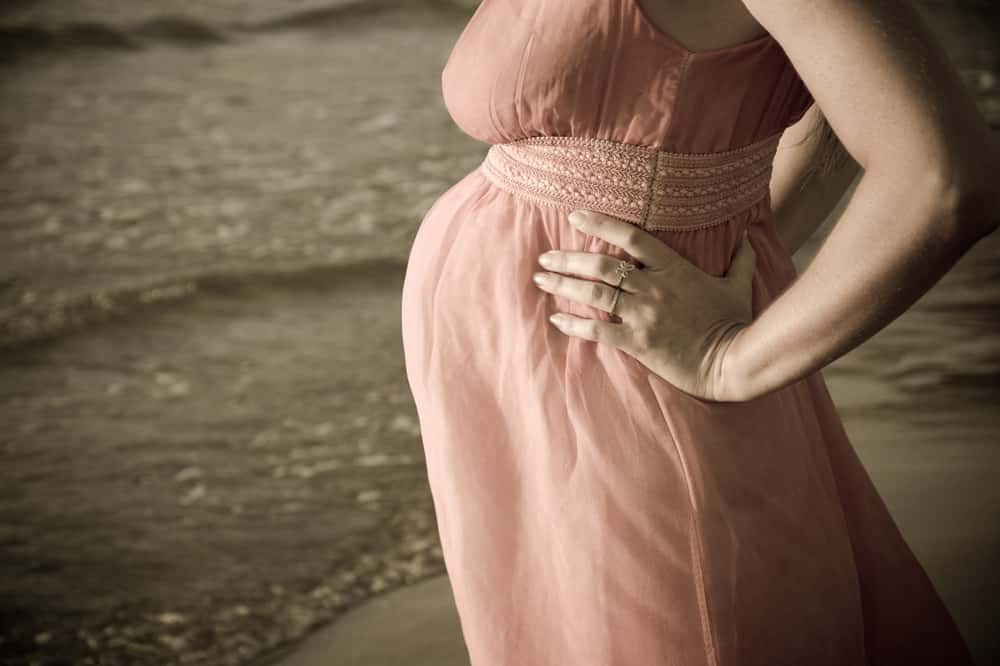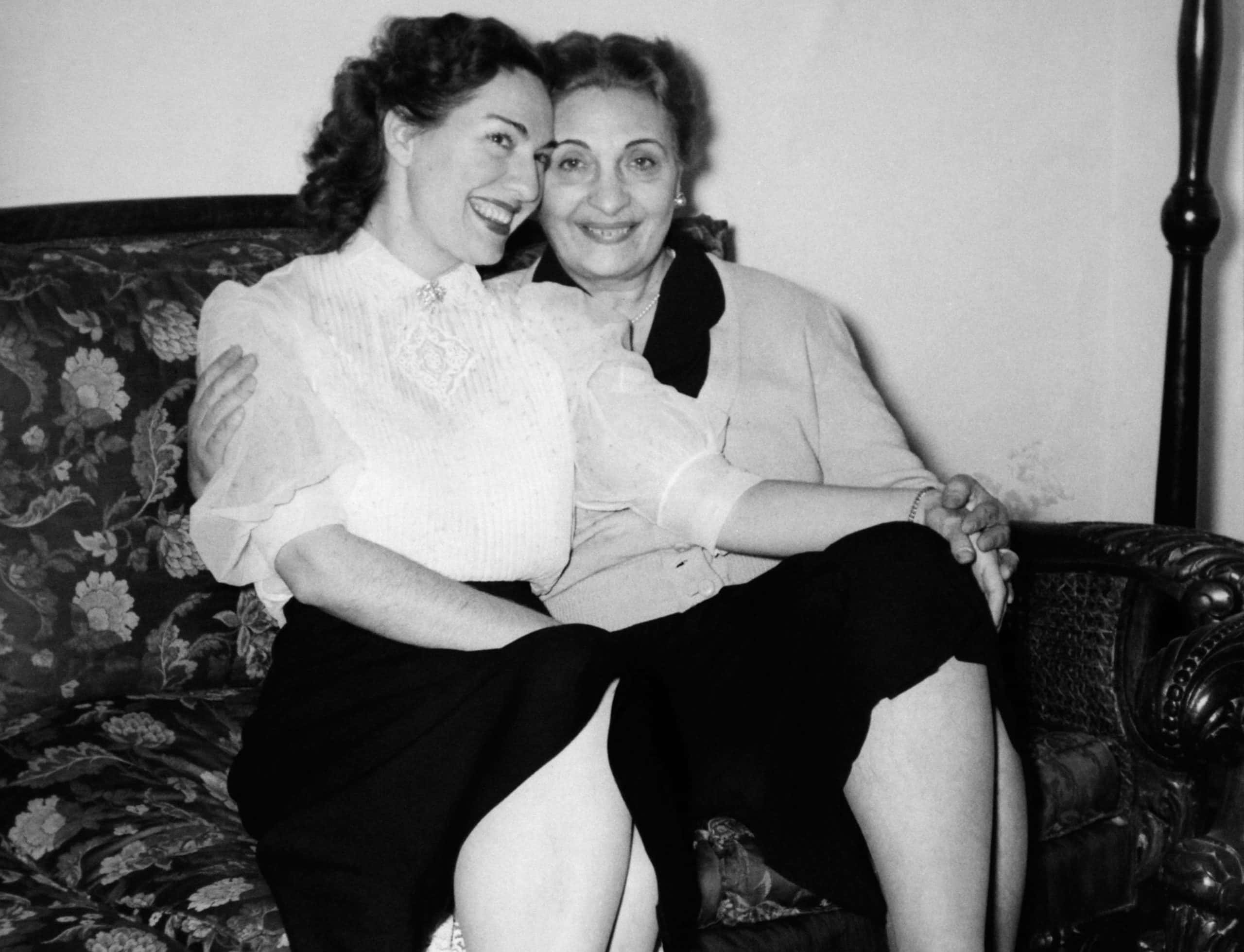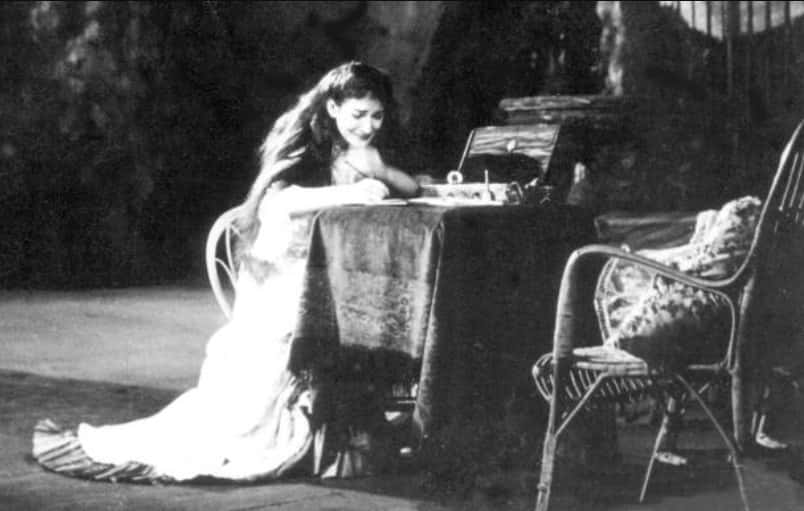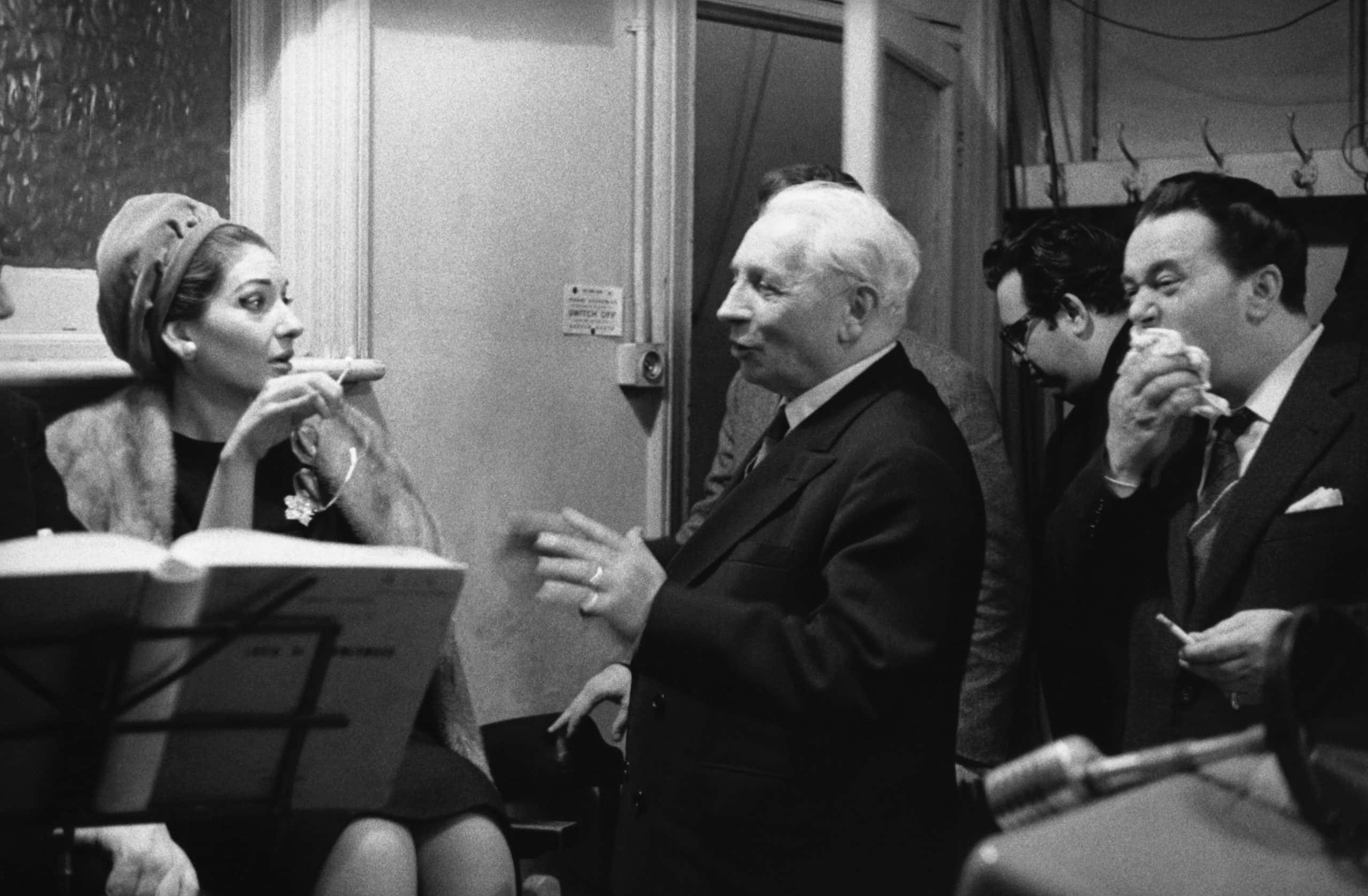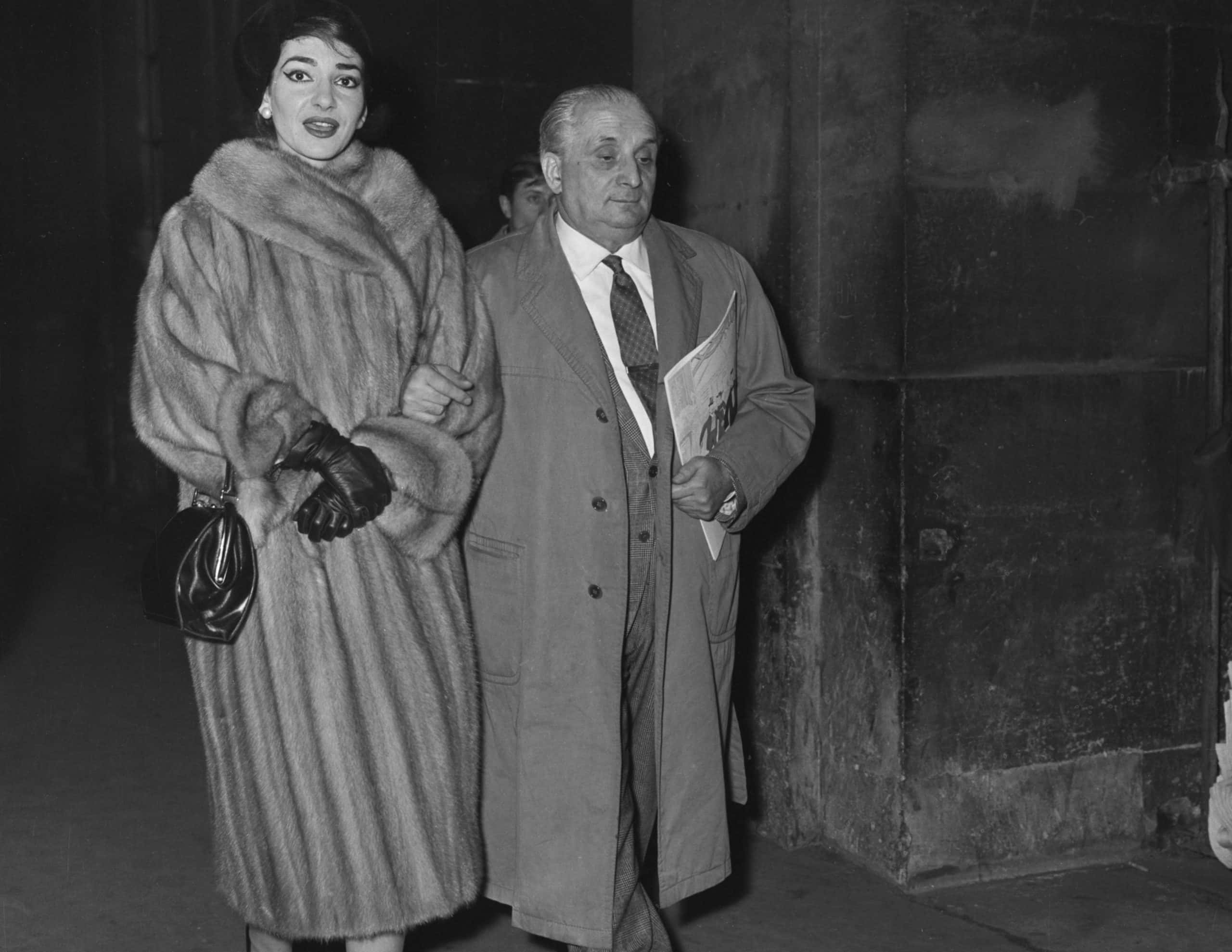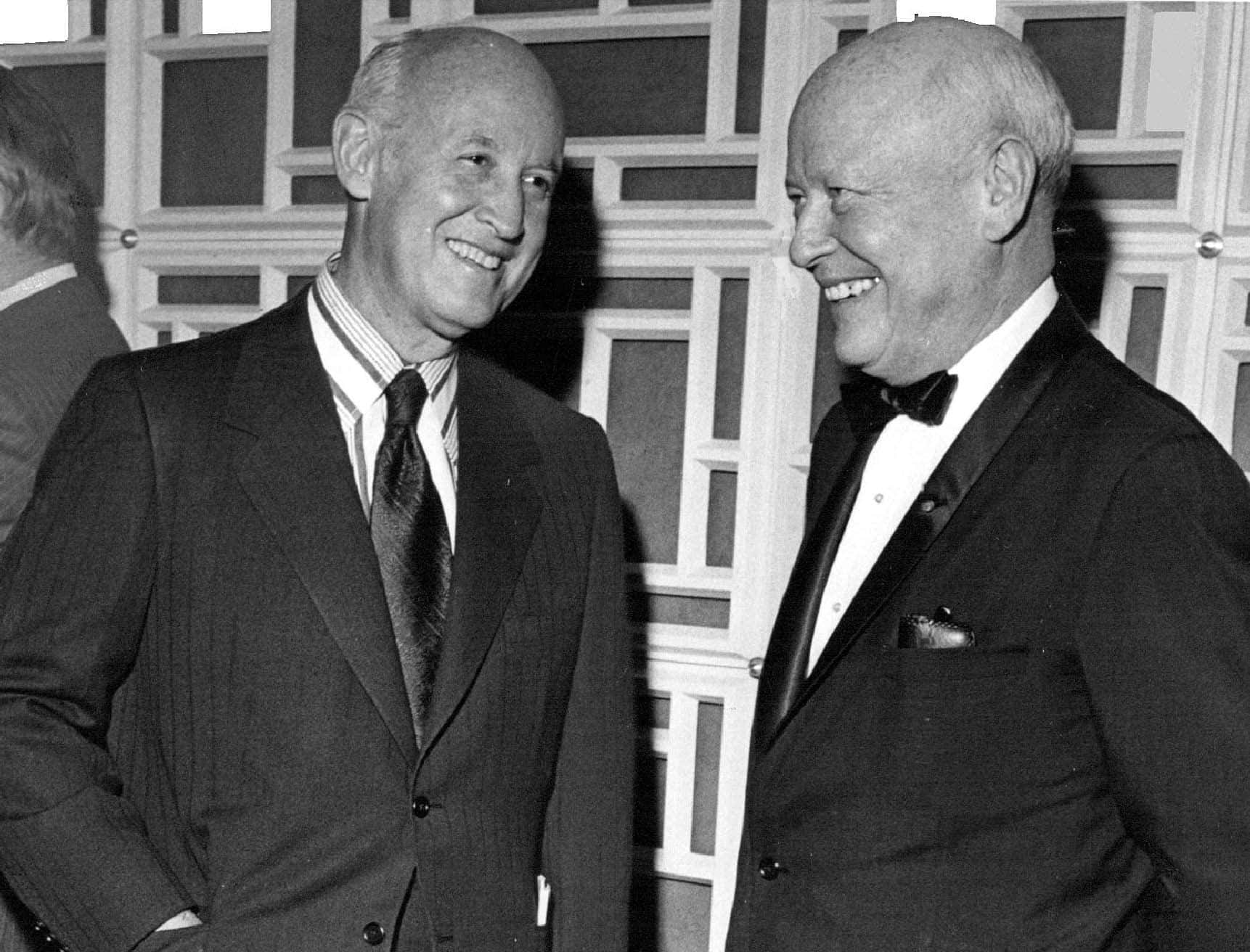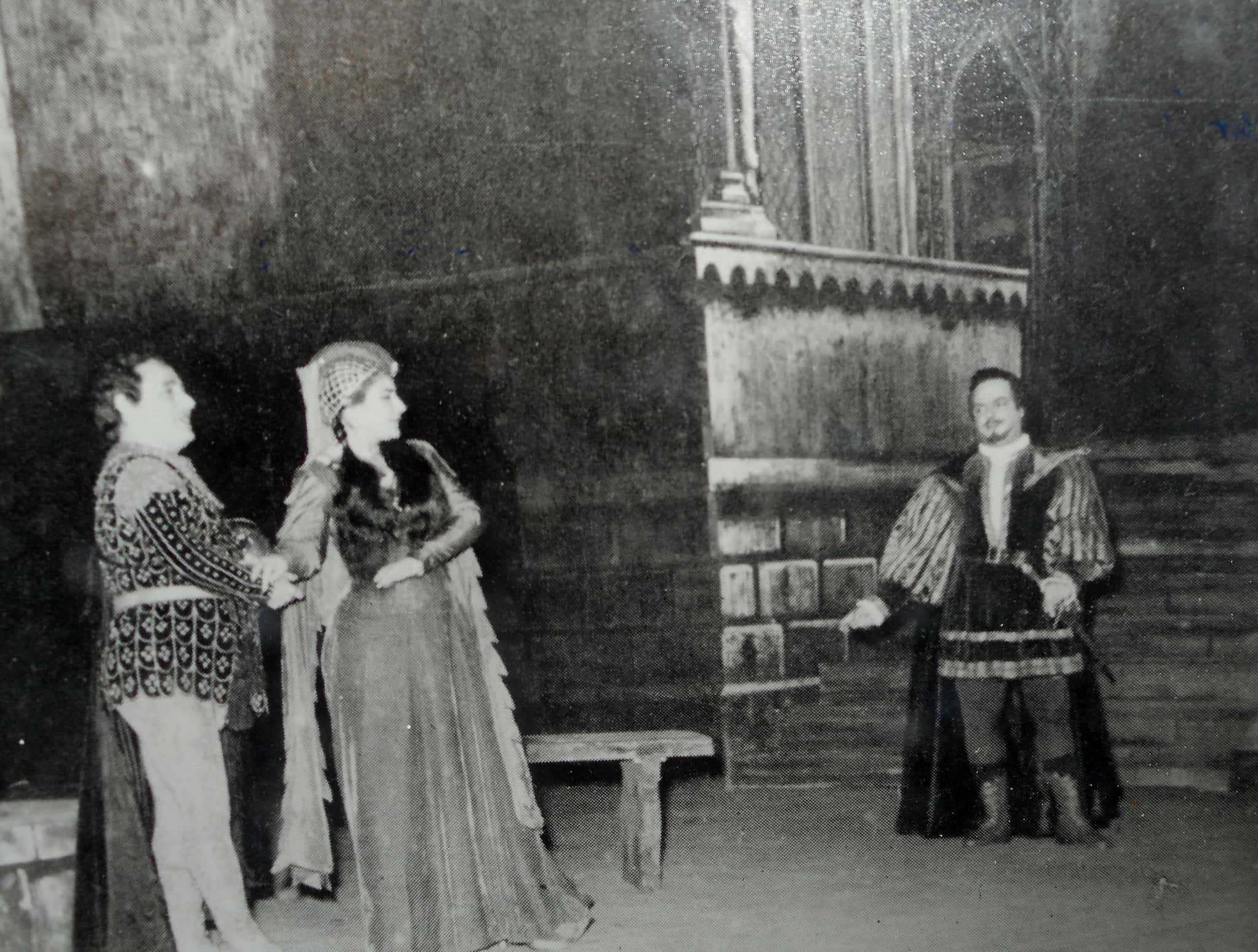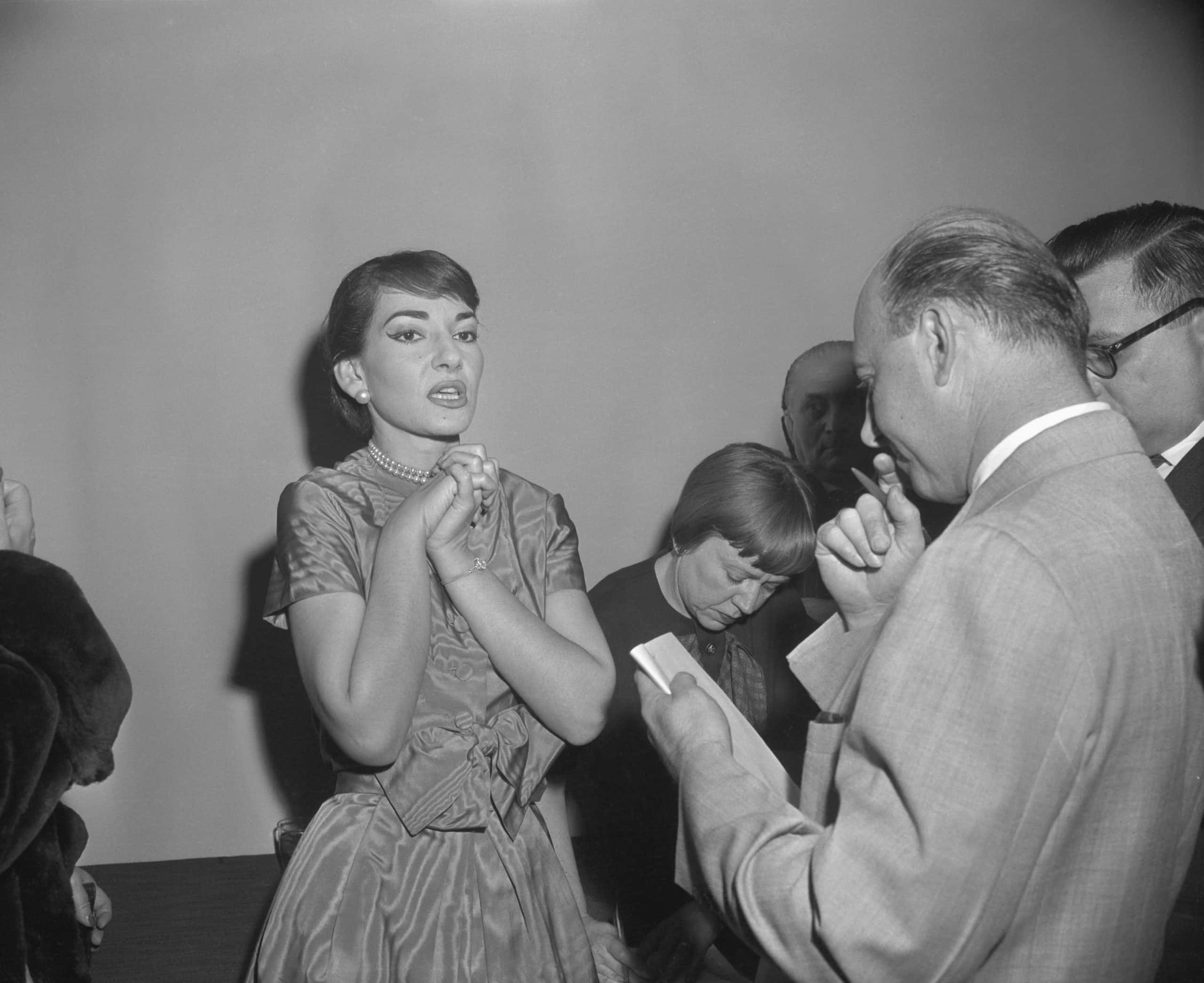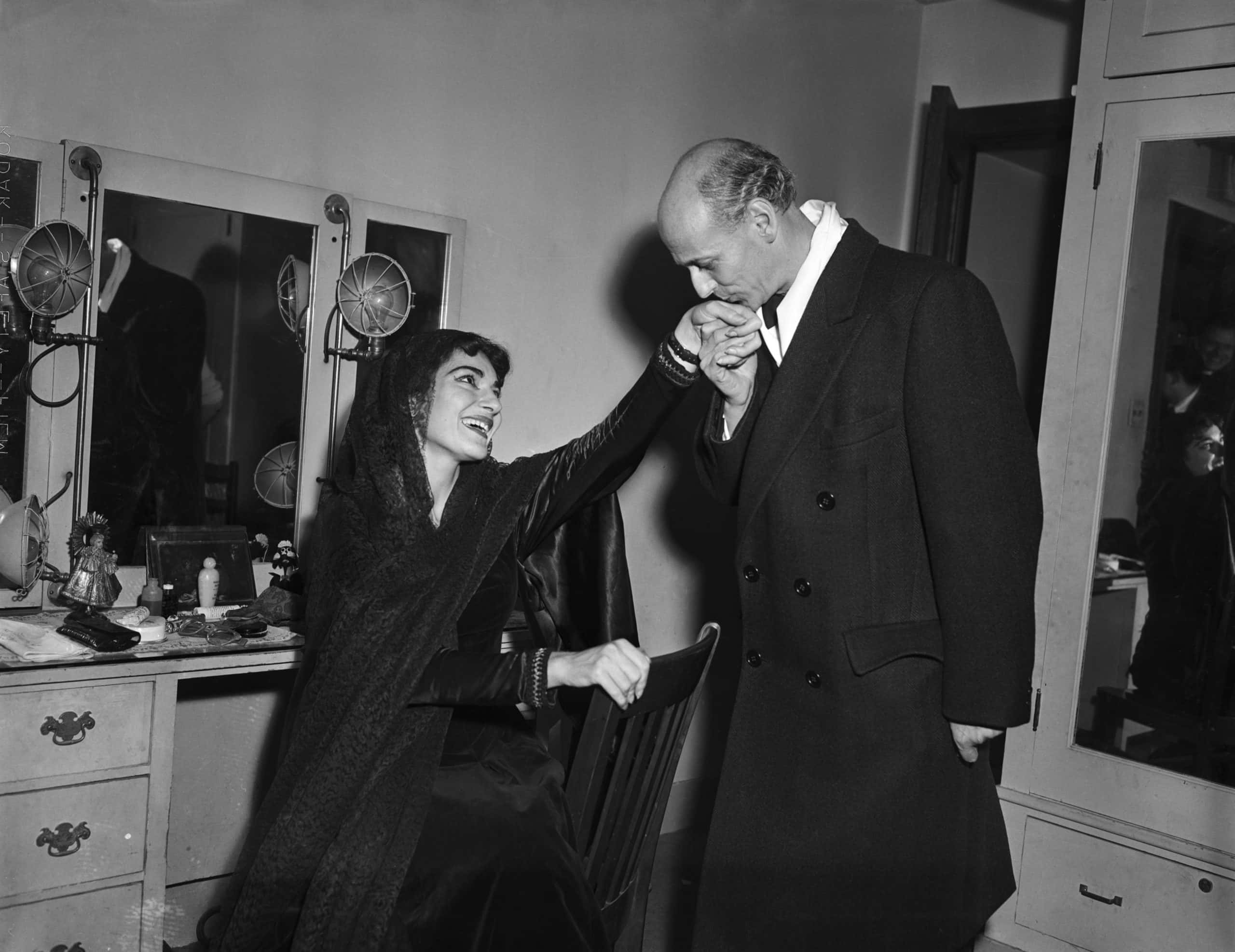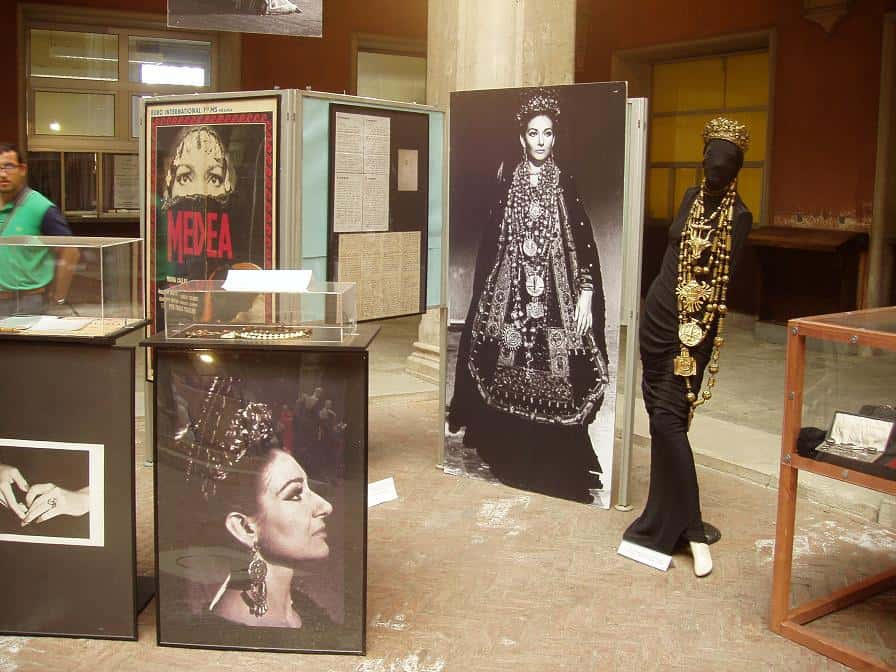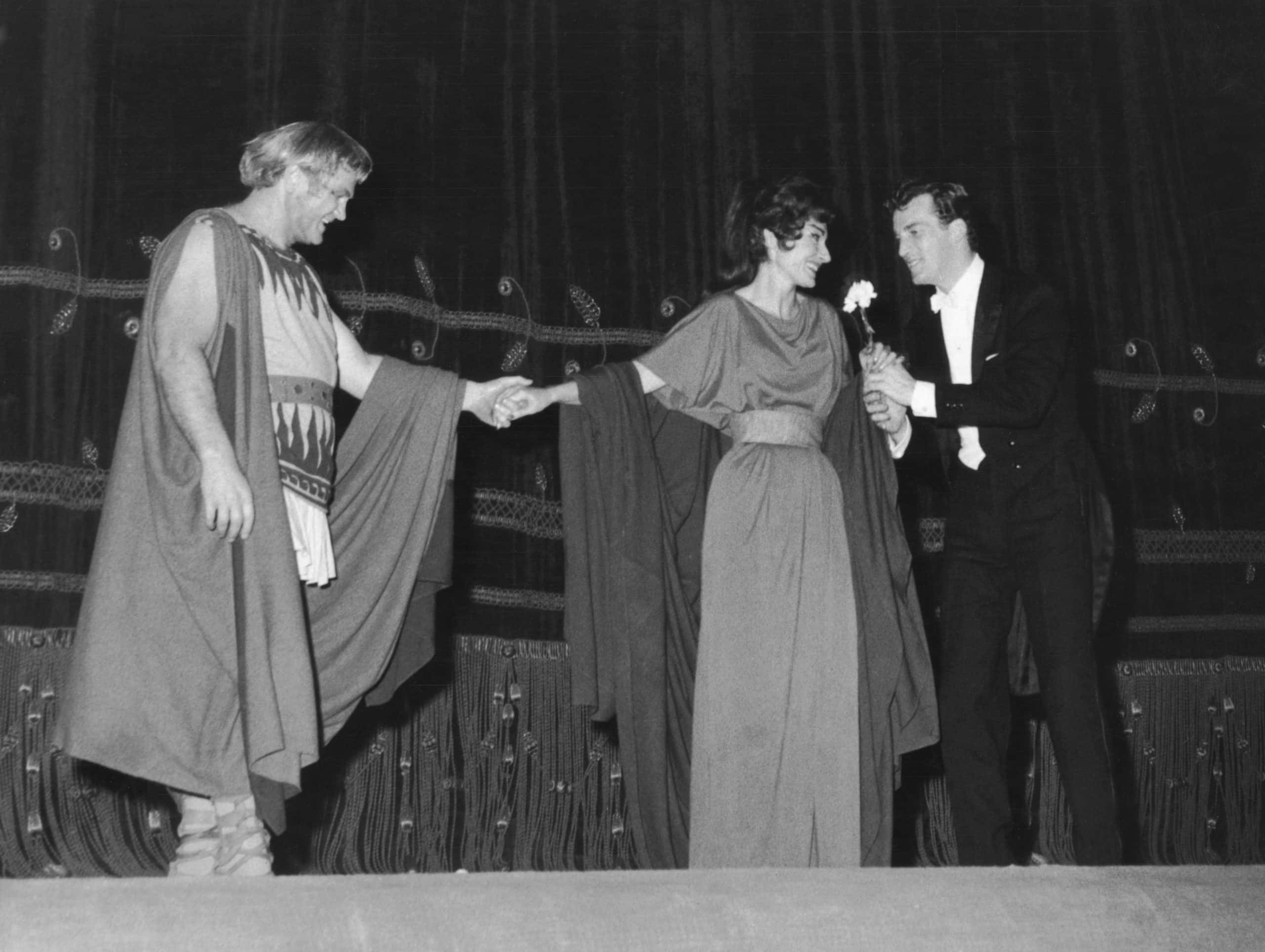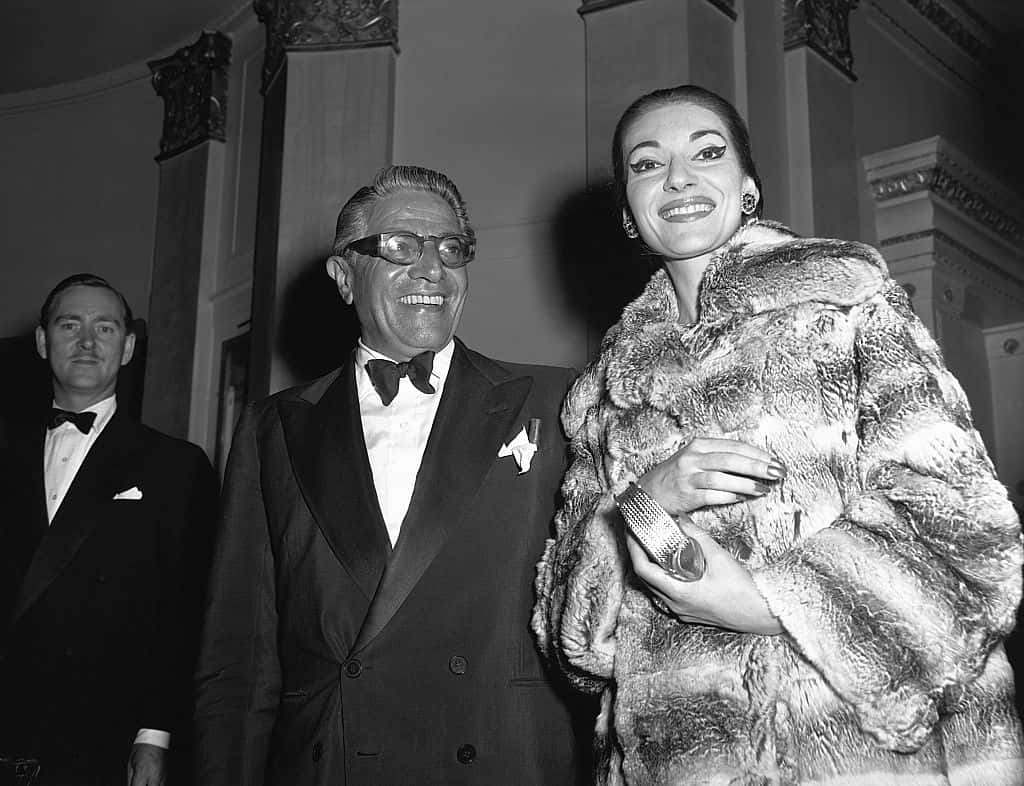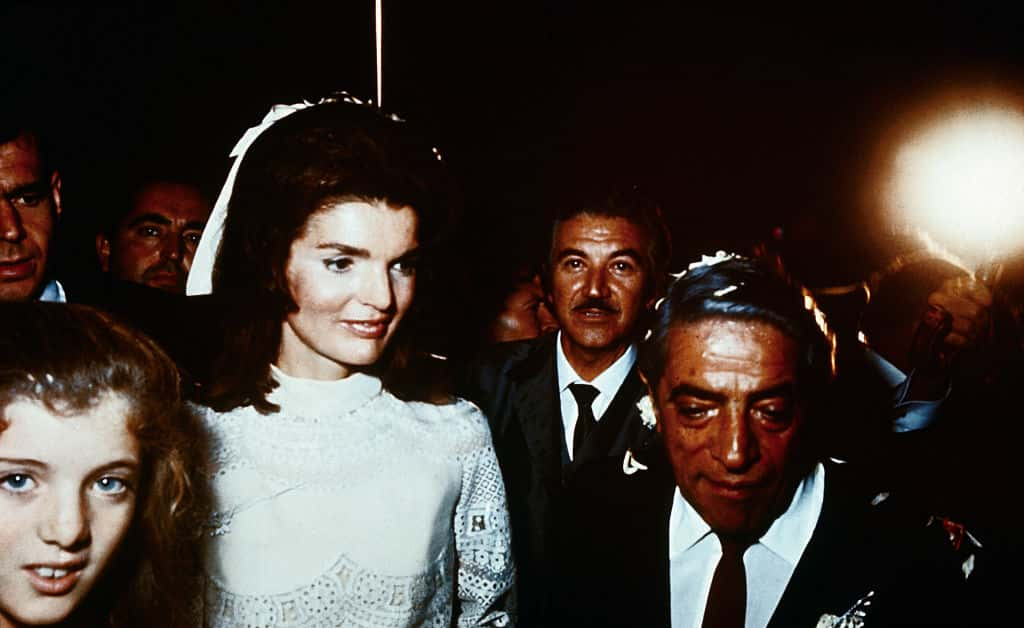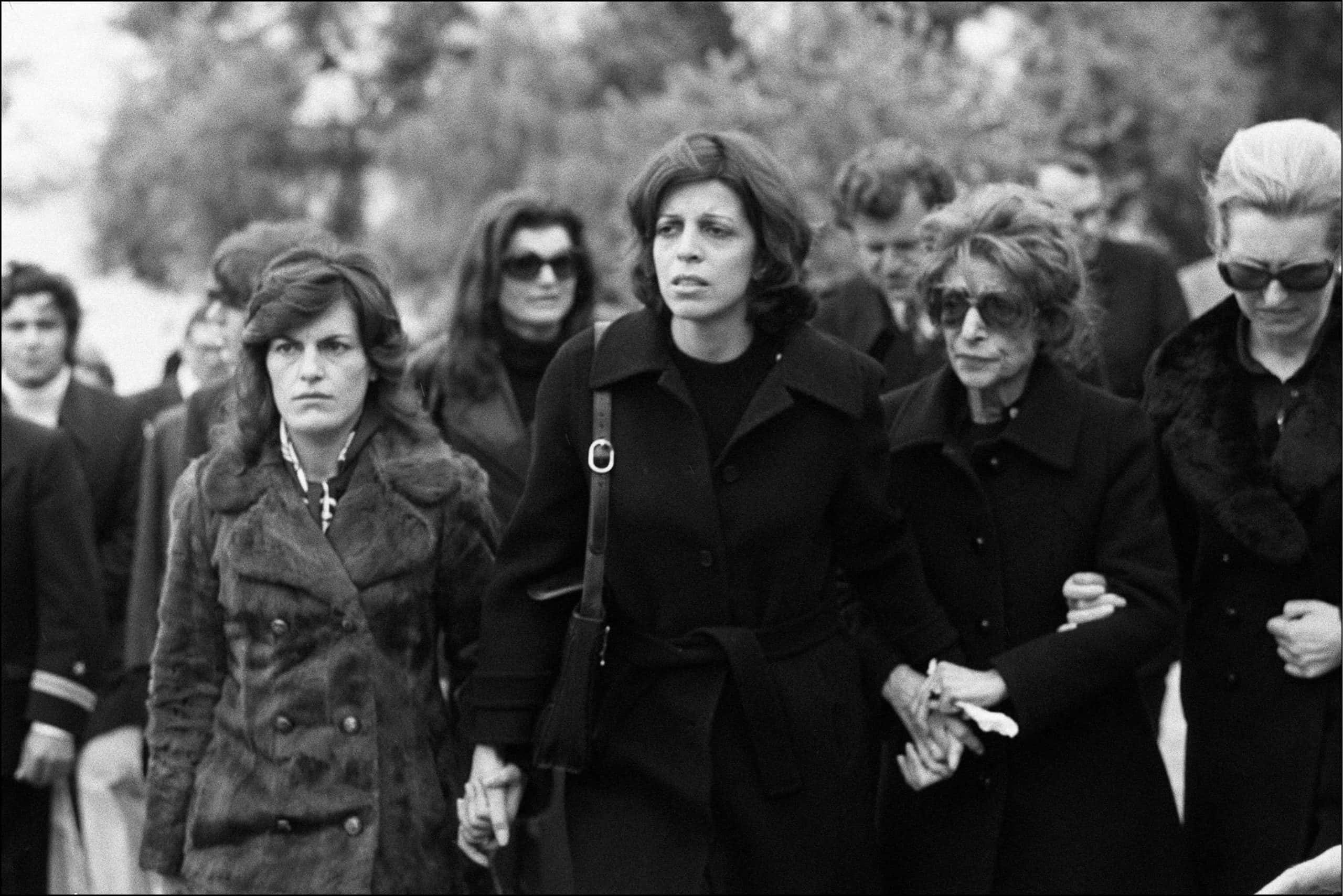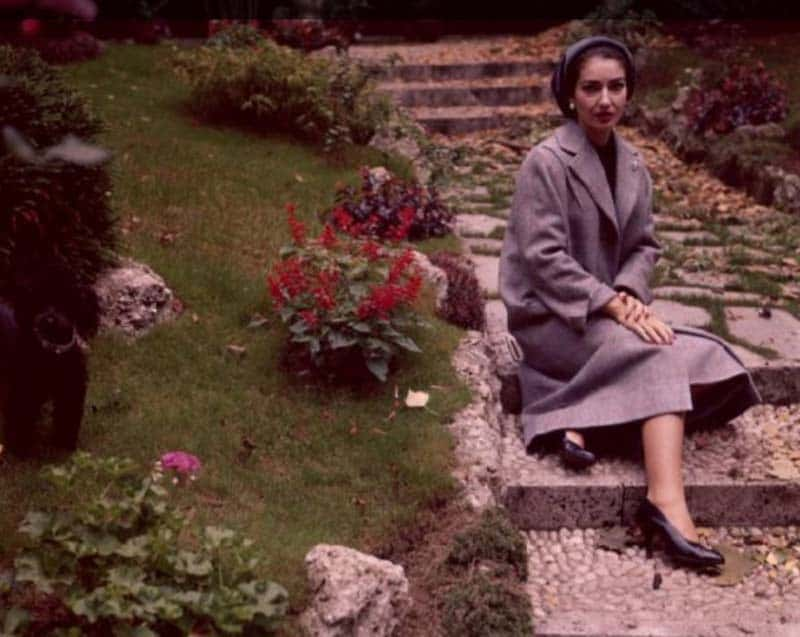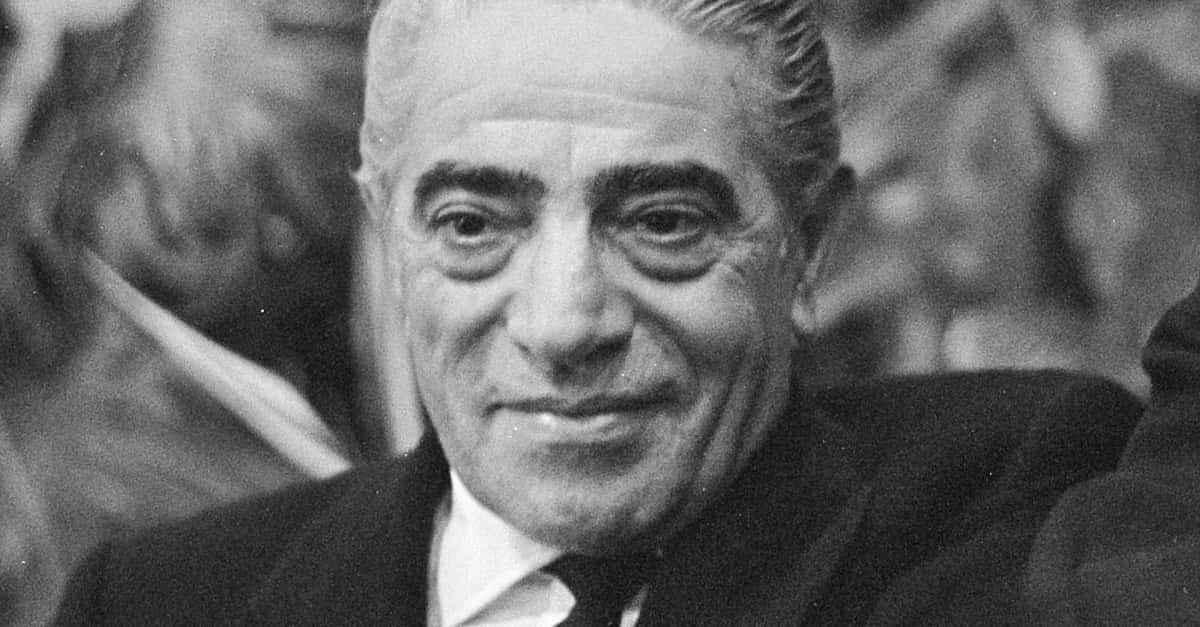Maria Callas’s career was equal parts iconic and controversial—but it had nothing on her absolutely explosive life behind the scenes. This first-class diva threw legendary temper tantrums, started feuds that would make Joan Crawford raise her eyebrows, and broke up one of the most iconic couples in American history in the most scandalous way imaginable. After all that, it’s fitting that her end was just as dramatic.
1. Her Family Was Toxic
Maria Callas had beginnings worthy of one of her operas. Born in December 1923, her parents George and Litsa were Greek immigrants to New York hoping to make a better life for themselves. Sadly, they were doomed from the start: While George was laid-back and unintellectual, Litsa was obsessed with becoming an influential socialite.
By the time they were living in America, the family was already coming apart at the seams. But when Maria came into the world, things got 10 times worse.
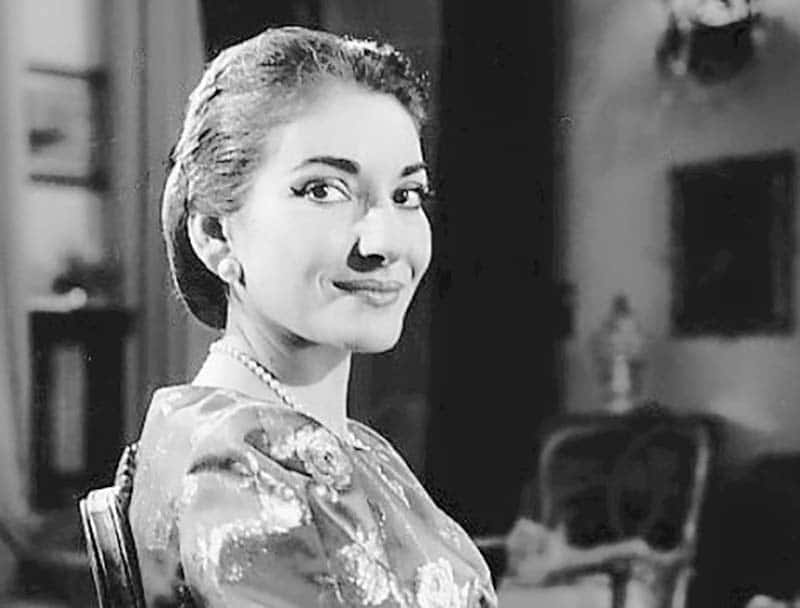 CBS Television, Wikimedia Commons
CBS Television, Wikimedia Commons
2. Her Mother Treated Her Horribly
When Litsa was pregnant with Maria, she had just lost a young son, Vassilis, from meningitis, and she was desperately hoping for another boy to fill the void. When she realized she’d had Maria, her response was bone-chilling. The woman was so crushed at the thought of a girl that no one could get her to even look at Maria for the first four days of her life. Yet soon enough, this mistreatment took a much more alarming turn.
3. Her Family Played Favorites
For a while, Litsa continued to ignore Maria, preferring her older, prettier sister Jackie. But when Maria turned three, the family began to notice that their humble little girl had one big voice. So big, in fact, that Litsa began to see dollar signs and society columns whenever she looked at her daughter. Suddenly, she went from neglect to smothering, and the result was a horror Maria wouldn’t soon forget.
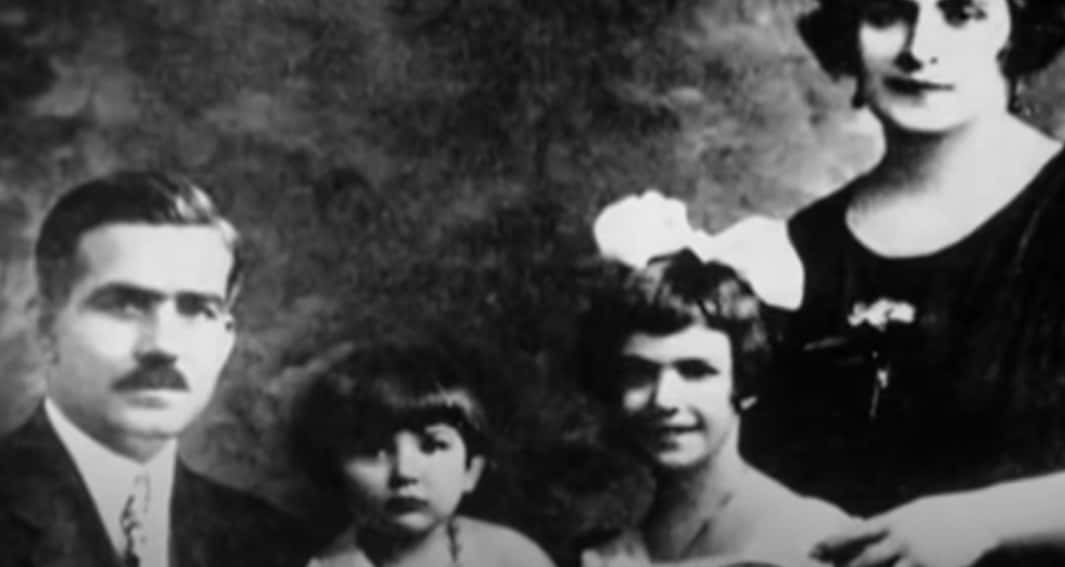 Isolde Films, Callas: A Documentary (1978)
Isolde Films, Callas: A Documentary (1978)
4. Her Mother Forced Her Into Singing
For the formative years of her life, Maria’s mother virtually forced the girl to sing for her supper, becoming a stage mom extraordinaire. As Maria later recalled, “During all the years I should have been playing and growing up, I was singing or making money.” And honestly, there was an even darker angle to all this. Litsa somehow managed to still favor the elder Jackie, especially as the girl slimmed out into a beautiful woman and Maria became, in her words, an “ugly duckling, fat and clumsy and unpopular.”
Only, as it turned out, Maria was about to face a much more demanding world outside her family unit.
5. She Was A Child Prodigy
In the late 1930s, Maria’s parents had completely dissolved their dysfunctional marriage, and the women of the family moved back to Greece. Here, Maria’s vocal talents only became more obvious, and she eventually won a spot training under Elvira de Hidalgo. The legendary soprano taught the arcane art of bel canto, an 18th-century way of singing that emphasizes emotional connection with the music. But even as de Hidalgo called Callas “a phenomenon,” the young girl began developing disturbing, ruinous habits.
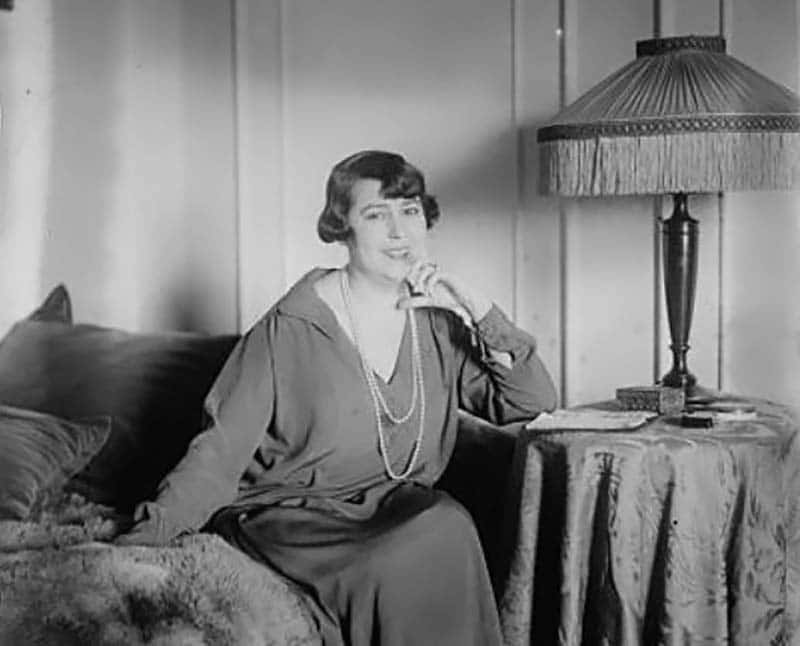 Bain News Service, Wikimedia Commons
Bain News Service, Wikimedia Commons
6. She Was A Teenage Workaholic
From a young age, Callas had learned from her mother that the only way she was worth anything was when she was working herself to the bone. Although the girl could already sing the most challenging arias in the world when she was barely a teenager, she would still spend 10 hours a day, every day, at the conservatory in Athens. Sure, it paid off—but it had an incredibly high cost.
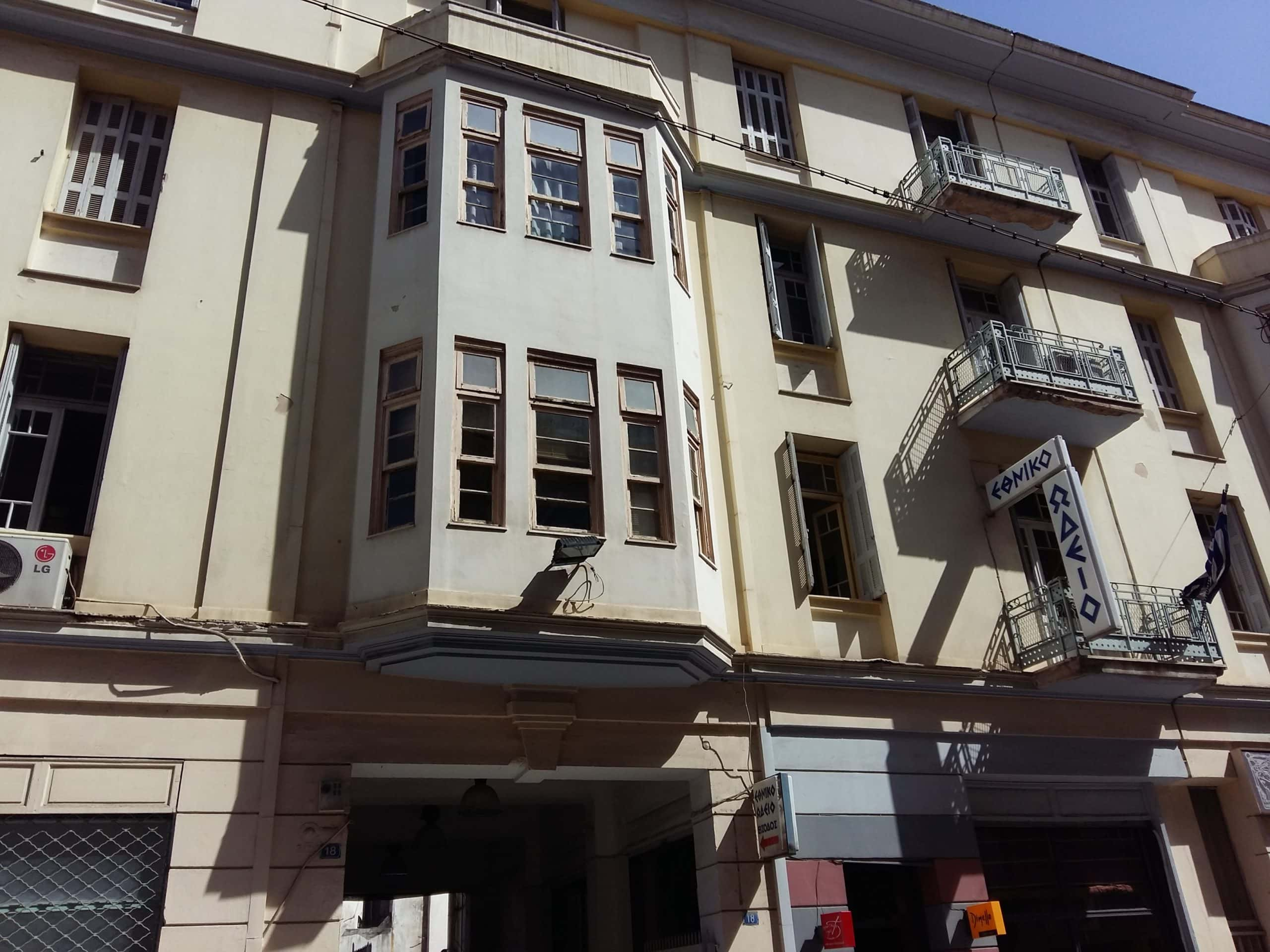 ΖῷονΠολιτικόν, CC BY-SA 4.0, Wikimedia Commons
ΖῷονΠολιτικόν, CC BY-SA 4.0, Wikimedia Commons
7. She Made Fast Enemies
In February 1941, Callas appeared for the first time on stage as a professional opera singer. Although it was only a minor role, she made quite the impression on her co-stars—just not a good one. As one young soprano in the show recalled, Maria was so good in rehearsals that everyone knew she was going to be a star…and two women, in particular, started plotting her demise.
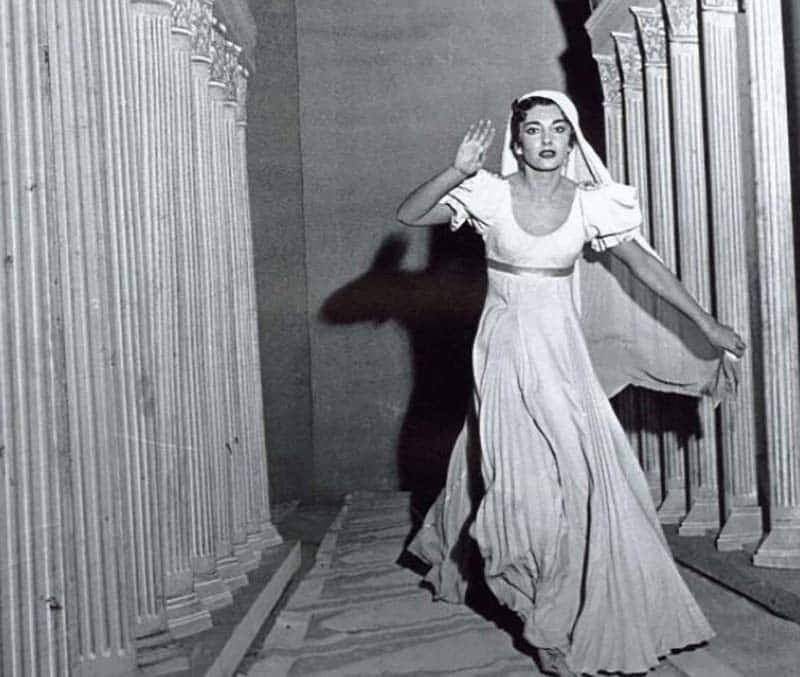 Teatro alla Scala, CC0, Wikimedia Commons
Teatro alla Scala, CC0, Wikimedia Commons
8. Her Co-Stars Tried To Ruin Her
The other singers in the opera were shaking in their boots about Maria literally upstaging them, so they started actively trying to sabotage her. The established company sopranos, Nafsika Galanou and Anna Remmoundou, even went so far as to rush to the wings whenever Callas was singing so they could throw her off her game and “make remarks about her, muttering, laughing, and point their fingers at her.”
It wouldn’t be the last time Callas dealt with mean girls—and in this case, she had the perfect response to shut them up.
9. She Was “God-Given”
Callas came out on top with the simplest tactic possible—she was just darn good. By 1942, she was starring in operas, and critics were dubbing her “The God-Given” or “La Divina” for the emotional power of her voice. When her rival Remmoundou watched her merely rehearsing for Beethoven’s Fidelio, even she had to ask: "Could it be that there is something divine and we haven't realized it?" Still, Callas did have one huge Achilles’ heel.
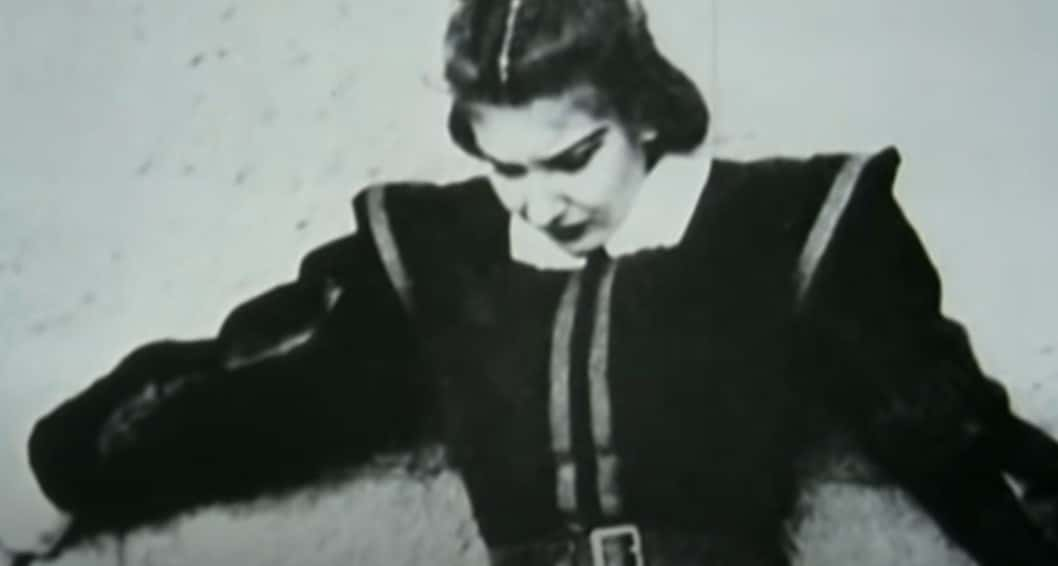 Isolde Films, Callas: A Documentary (1978)
Isolde Films, Callas: A Documentary (1978)

History's most fascinating stories and darkest secrets, delivered to your inbox daily.
10. Her Voice Was Ugly
One of the first hurdles Callas faced was also her biggest: Her voice itself. To this day, “The Callas Debate” rages about if the sound of her voice was beautiful or disturbing. While it was always moving, some found its roughness and power “essentially ugly,” and her later mentor Tullio Serafin even nicknamed her Una grande vociaccia, which, as he put it, meant “A great ugly voice, in a way."
Worst of all, Callas agreed; she infamously despised listening to her own voice for much of her career. But soon enough, much different problems were coming her way.
11. She Received A Cruel Insult
Callas may have been “God-Given,” but she could fight like the devil. As a prodigy of her art, the young, still-chubby Maria once took over the lead role in an opera in Athens’ National Company after the more seasoned star fell ill. That night while dressing for the show, Callas overheard a man say, “That fat [witch] will never carry it off." Her reaction was as swift as it was brutal.
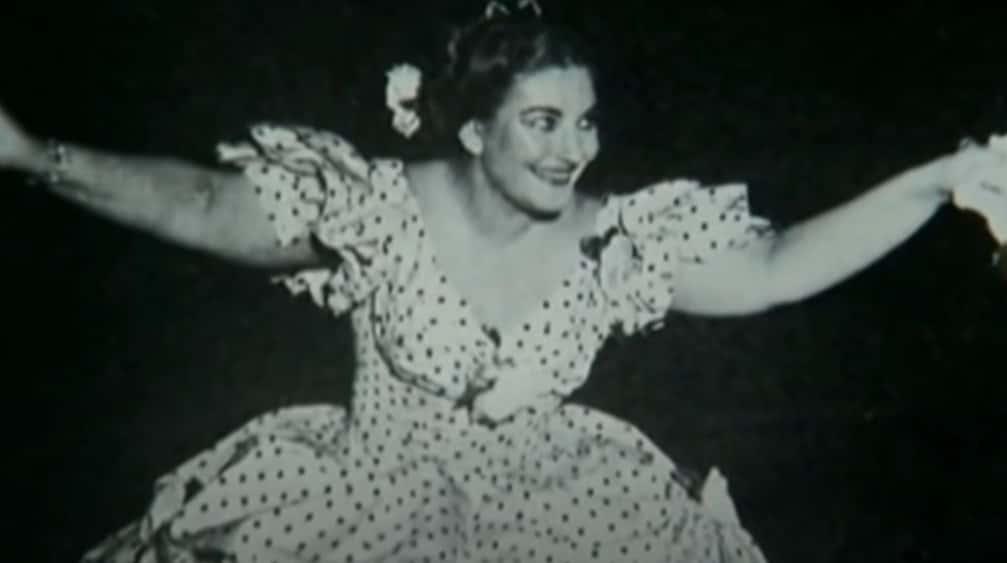 Isolde Films, Callas: A Documentary (1978)
Isolde Films, Callas: A Documentary (1978)
12. She Got Into A Backstage Brawl
Callas reportedly ran after the man in question, leapt on him, and attacked him while screaming like a banshee, bloodying his nose and shredding his shirt in the process. She also managed to injure herself, banging up her eye. Yet ever the professional, Callas still made it out on stage that night, swollen eye and all, and wowed the critics into rave reviews. For all that, our girl did have a more vulnerable side…
 Isolde Films, Callas: A Documentary (1978)
Isolde Films, Callas: A Documentary (1978)
13. She Liked Older Men
In the mid-1940s, the diva’s life went from opera to soap opera. While living in Verona and establishing an Italian opera career, the 24-year-old met the wealthy industrialist Giovanni Battista Meneghini. Meneghini was 26 years older than her but started pursuing the soprano with a passion and singular purpose Callas couldn’t resist. Soon enough, she’d made one rash decision.
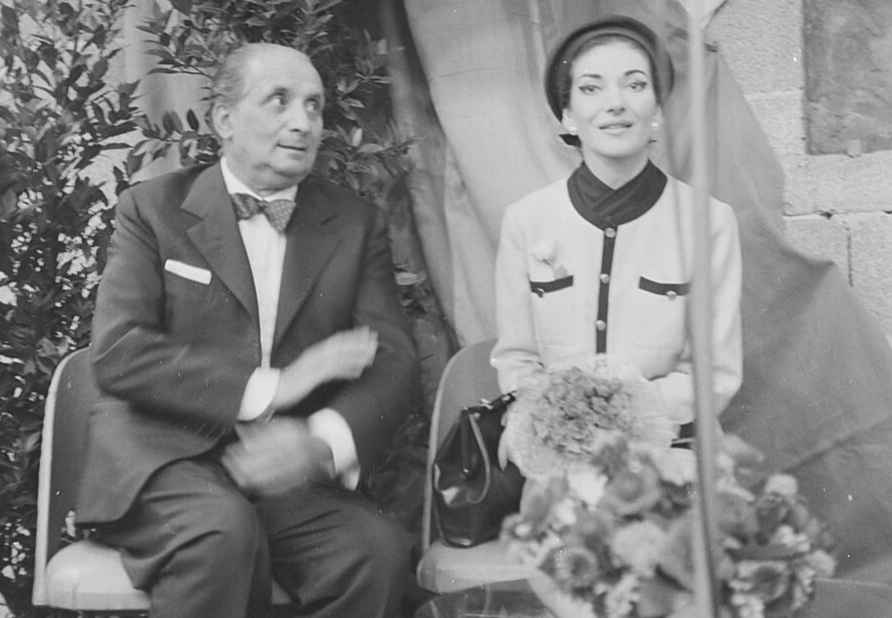 Fotopersbureau De Boer, CC0, Wikimedia Commons
Fotopersbureau De Boer, CC0, Wikimedia Commons
14. She Married Extremely Young
In 1949, Maria made it official with Giovanni, marrying him and even changing her stage name to Maria Meneghini Callas. Yet despite their whirlwind romance, their relationship had a calculating side, too. Obviously seeing the potential in his new, nubile bride, Giovanni began managing her performance schedule. So perhaps it’s no surprise that the year they married, one of the most notorious events of Callas’s career happened.
15. She Was Given An Impossible Task
While rehearsing for the dramatic role of Brünnhilde in Die Walküre, Callas got word that the soprano for the icy bel canto part of Elvira in I puritani had dropped out—so the theatre wanted her to perform both very different roles within days of each other. Now, in case you don’t know: This is absolute madness, and everybody knew it. As the opening nights approached, the entire city was waiting for the divine Maria Callas to fall on her butt. Guess what? She very much didn’t.
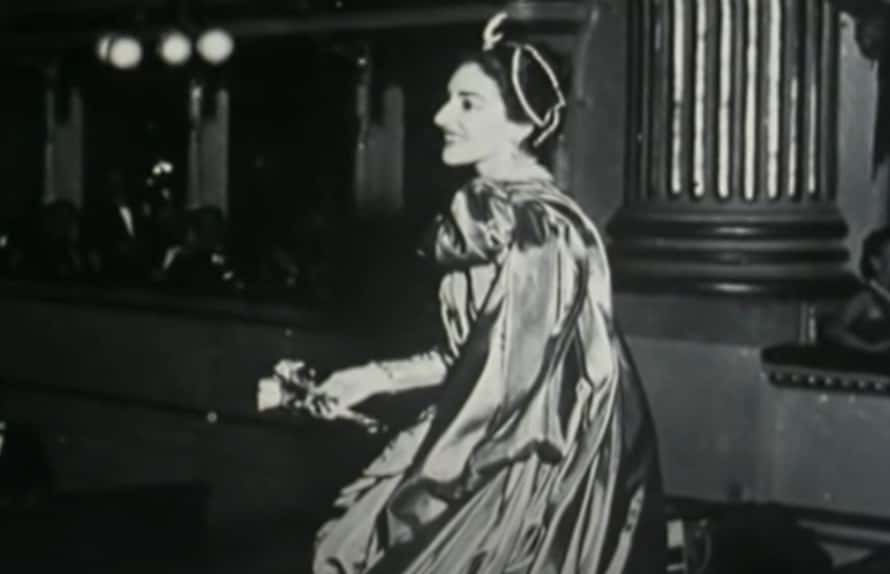 Isolde Films, Callas: A Documentary (1978)
Isolde Films, Callas: A Documentary (1978)
16. She Became An Icon Overnight
Callas blew both performances out of the water, leading even her harshest critics to note that she had done the near impossible. It’s dang hard to exaggerate just how much this put Callas into the stratosphere of opera singing, not to mention how it re-awakened the world’s interest in bel canto operas thanks to her work as Elvira. Overnight, she went from extremely talented to completely iconic.
But the bigger they are, the harder they fall, and cracks were beginning to show.
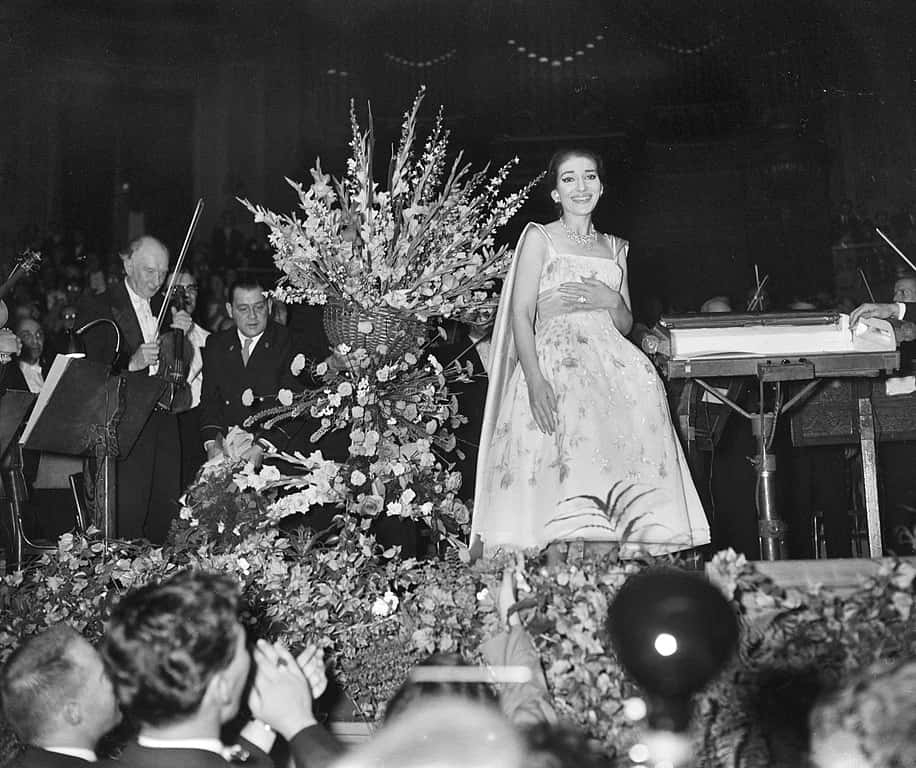 Joop van Bilsen / Anefo, CC0 ,Wikimedia Commons
Joop van Bilsen / Anefo, CC0 ,Wikimedia Commons
17. She Had A Legendary Feud
Callas always had an enormous target on her back thanks to her out-sized talent, but one day, she met her match. In the early 1950s, Callas’s contemporary Renata Tebaldi began rising through the opera ranks, and many saw her as a direct response to the “God-Given” Callas. A lyrical soprano, Tebaldi possessed a classic voice of clean beauty, AKA everything the dark, strange Callas wasn’t. Enter: A feud for the ages.
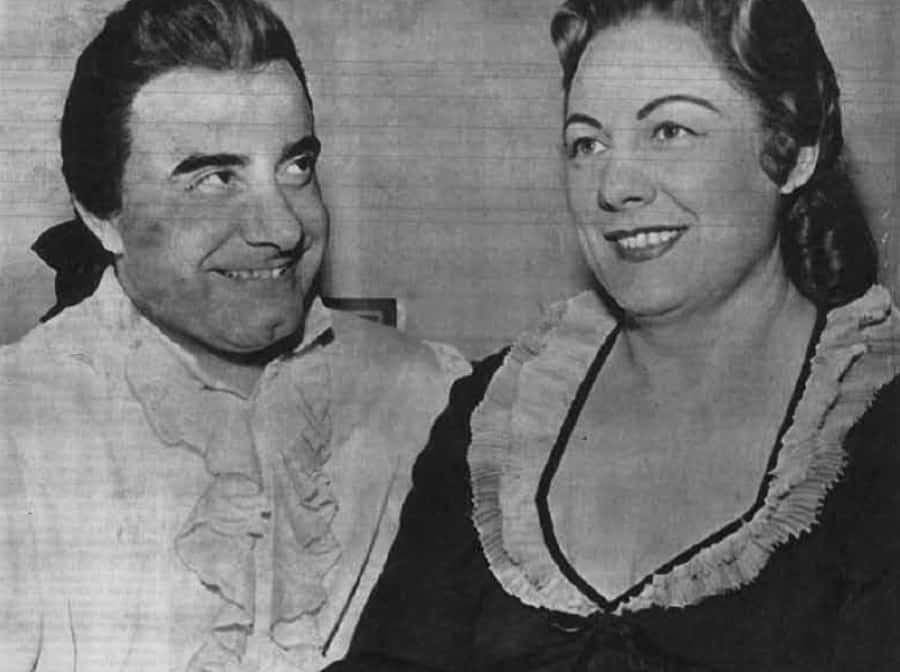 Wikimedia CommonsVborso, CC BY-SA 3.0, Wikimedia Commons
Wikimedia CommonsVborso, CC BY-SA 3.0, Wikimedia Commons
18. She Refused To Share The Stage
At the beginning, Tebaldi and Callas stayed out of each other’s way, but in 1951, it came to an explosive climax. That year, both sopranos were due to sing in the same vocal recital in Rio de Janeiro, Brazil. Out of respect for each other (and their egos), they mutually agreed not to perform any encores for the excited crowd. That’s…not the way things went down at all.
 Rafael Rabello de Barros, CC BY-SA 3.0, Wikimedia Commons
Rafael Rabello de Barros, CC BY-SA 3.0, Wikimedia Commons
19. Her Rival Betrayed Her
Apparently, Tebaldi never quite internalized this memo, because after her set, she not only performed an encore—she performed two. Backstage, Callas was reportedly beside herself with fury, and, a diva right down to her bones, she wasn’t a woman who could soon forget public embarrassment. In the next months, the gloves came off for a rip-roaring catfight.
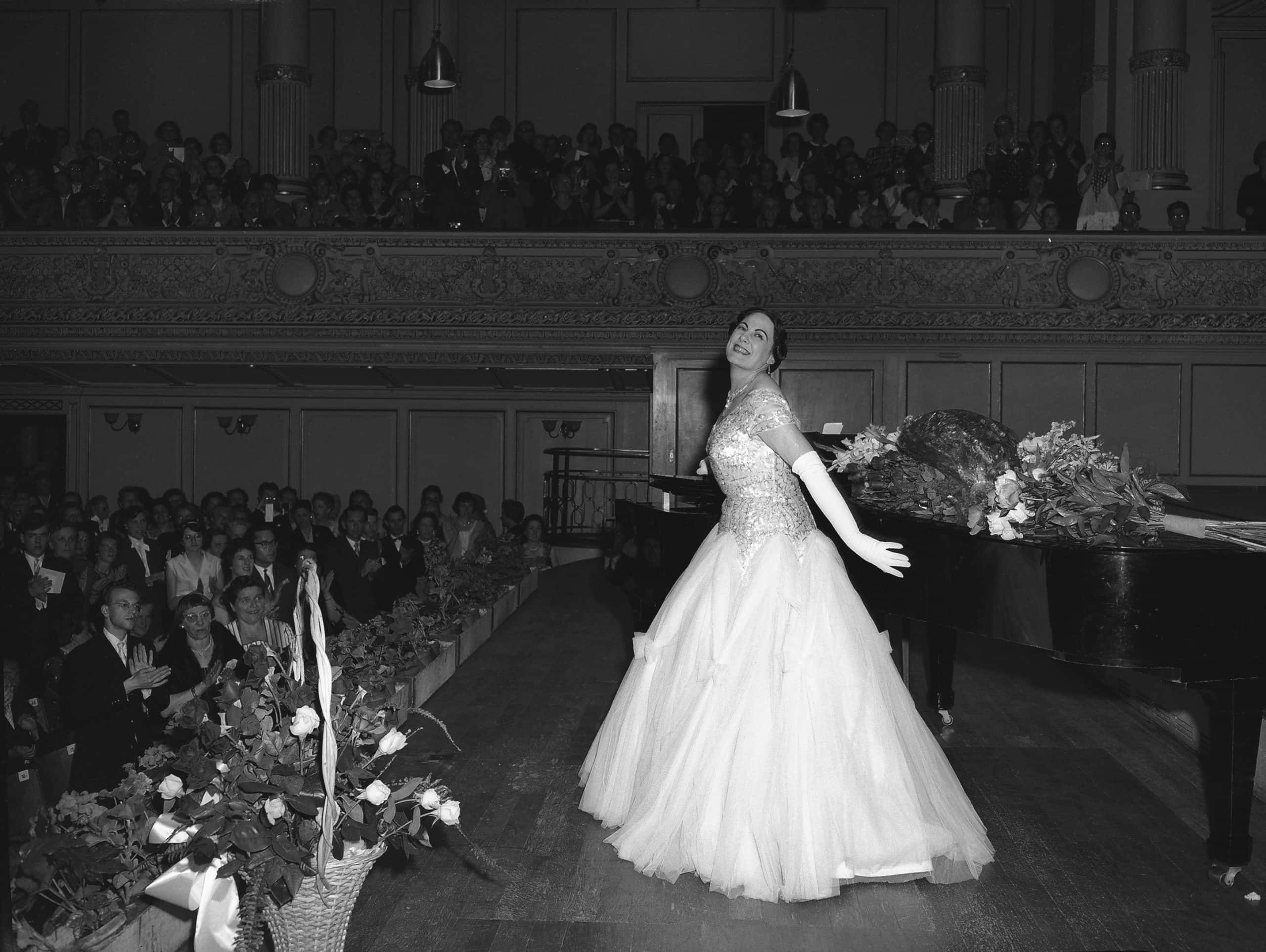 ullstein bild Dtl., Getty Images
ullstein bild Dtl., Getty Images
20. She Taunted Her Enemy
While Tebaldi often avoided Callas’s shows from that point on, Callas—always willing to jump into the fray—took a different tack entirely. According to Time magazine, Callas would ostentatiously show up to nights Tebaldi was performing, sit front and center in a box seat, and loudly “cheer” Tebaldi on until the poor woman started to waver on stage. Unsurprisingly, Tebaldi began whittling away her appearances, and Callas only ramped up.
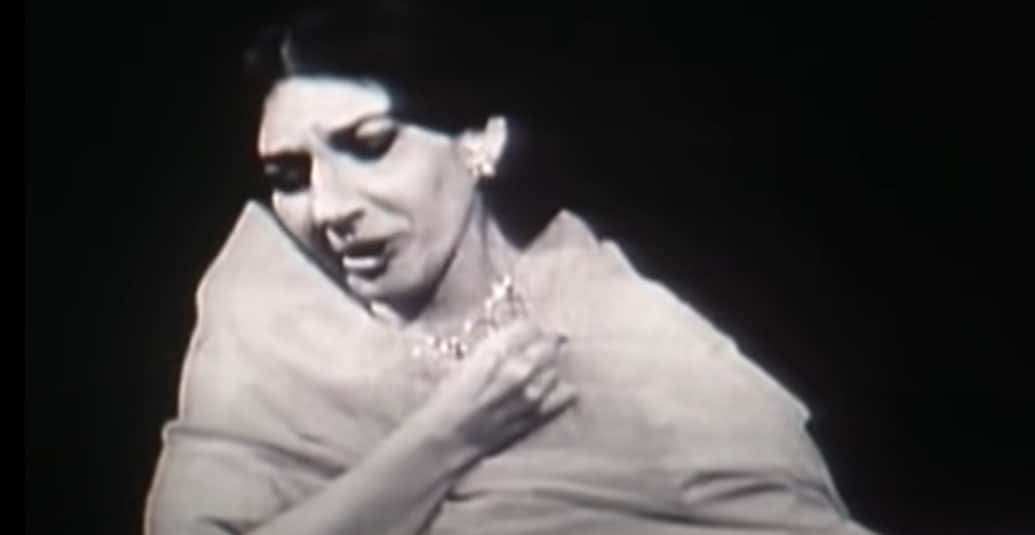 Isolde Films, Callas: A Documentary (1978)
Isolde Films, Callas: A Documentary (1978)
21. She Had A Perfect Comeback
At the height of their feud, Tebaldi allegedly once said, "I have one thing that Callas doesn't have: a heart." Callas’s response was so cutting, it’s unforgettable. While speaking to Time, she reportedly tossed out that she and Tebaldi were so stylistically different, it was like "comparing Champagne with Cognac...No...with Coca Cola." Though Callas later swore she was misquoted, I would never disavow such an all-time diss. But more was to come.
 Isolde Films, Callas: A Documentary (1978)
Isolde Films, Callas: A Documentary (1978)
22. Her Very Name Meant Scandal
Although both Callas and Tebaldi later claimed the rivalry was exaggerated, even their nearest and dearest knew better than to mention the one diva to the other. So when Tebaldi once asked Met Opera bigwig Francis Robinson to recommend a recording of the opera La Gioconda to help her learn the lead, Robinson purposefully chose the one that wasn’t by Maria Callas. Except, uh, this backfired. Big time.
23. She Upstaged Her Rival
When Robinson came to visit Tebaldi soon after to see how she was getting on with studying the part, he got a huge surprise. He walked into the soprano sitting by her speakers and listening with great concentration to Callas’s version of the performance. Tebaldi then looked over at Robinson immediately asked, "Why didn't you tell me Maria's was the best?"
Still, Tebaldi was only Callas’s first brush with infamy—and it was just the beginning of her nightmarish reputation.
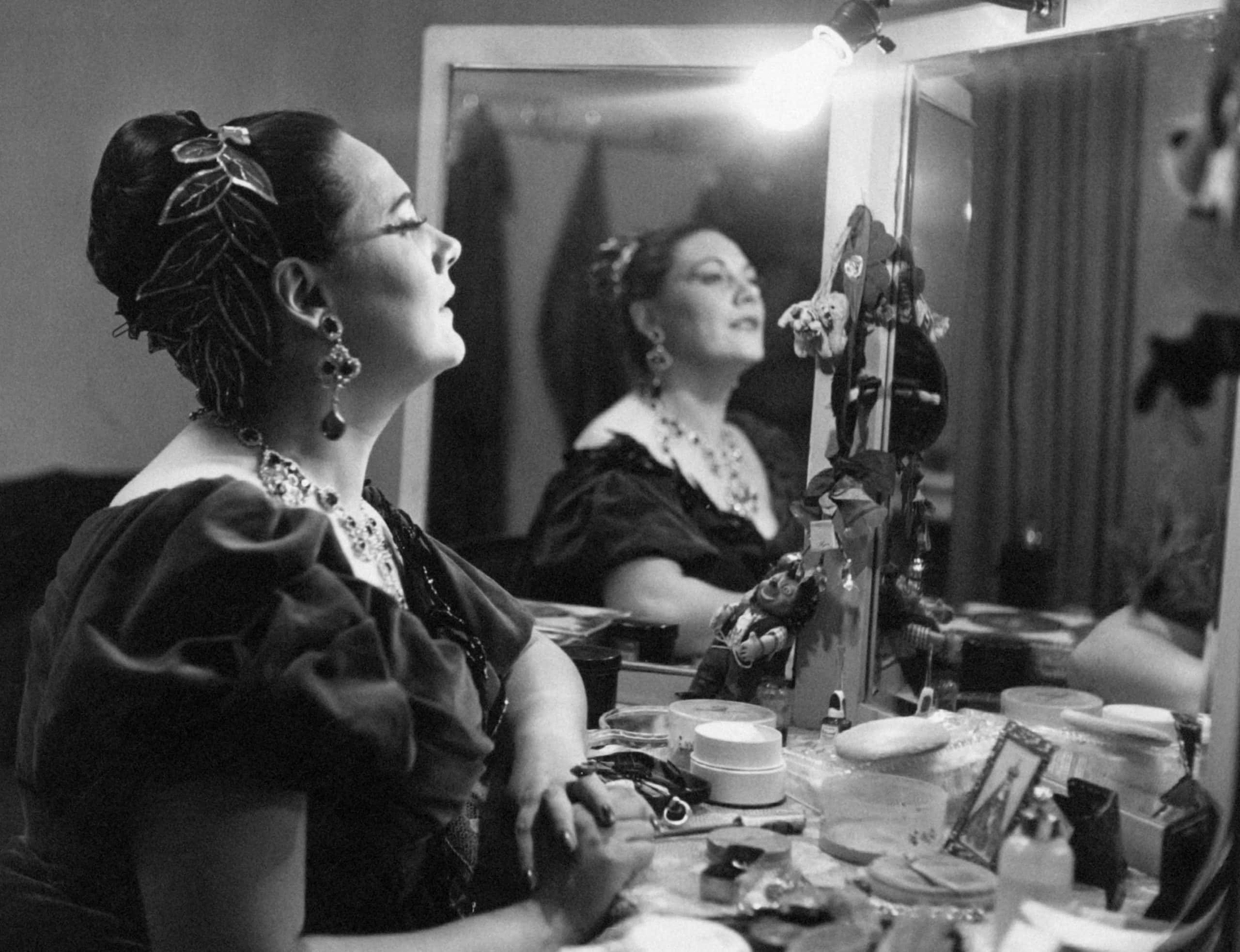 Mondadori Portfolio, Getty Images
Mondadori Portfolio, Getty Images
24. She Fed Off People’s Hatred
In the middle of Callas’s many feuds, even the audience began to choose sides. Supporters of her rivals would hiss at Callas in the crowd during her shows…but it had the opposite effect than they intended. It only fueled her fire, and Callas would often respond by staring directly at her enemies while singing the best arias she had ever performed. Then, when the time came to take a bow, she would lower her body to everybody but them.
As she put it, "As long as I hear them stirring and hissing like snakes out there, I know I'm on top. If I heard nothing from my enemies, I'd know I was slipping. I'd know they're not afraid of me anymore."
25. She Took A Notorious Photograph
In 1955, a photograph showed the true dark side of Maria Callas. That night, just as Callas wrapped up a performance of Madama Butterfly, a process server confronted the diva with a lawsuit from a hanger-on claiming to be her agent. The suit went almost nowhere, but Callas’s terrifying response—a vicious, animal snarl at the man—was preserved forever on film, thanks to a photographer in the wrong place at the right time.
There had always been rumblings of Callas’s temperament, but for the world, this was cold, hard proof of her prima donna ways, and people began to call her a “Tigress.” Inside, however, Callas was so much more fragile than people knew.
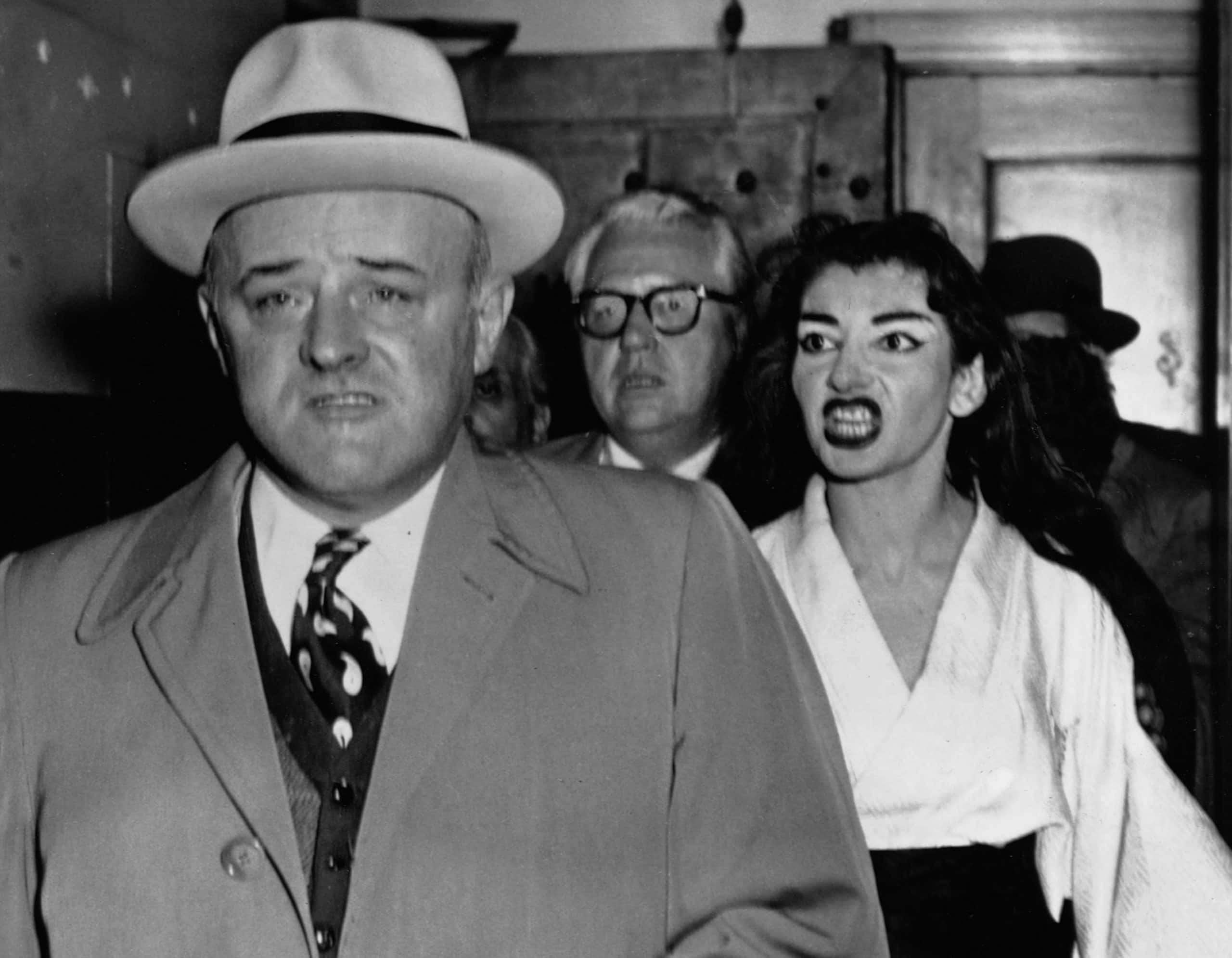 Library of Congress, Getty Images
Library of Congress, Getty Images
26. She Was “Too Heavy”
From a chubby child and adolescent, Callas had grown into a heavy woman, and had always carried weight well into her early career. At 5’ 8” 1/2, she hovered just under 200 pounds—and while having extra weight often helps sopranos produce fuller sounds with their bodies, this apparently wasn’t good enough for the men in Callas’s life. One day, one of them let her know it in a brutal way.
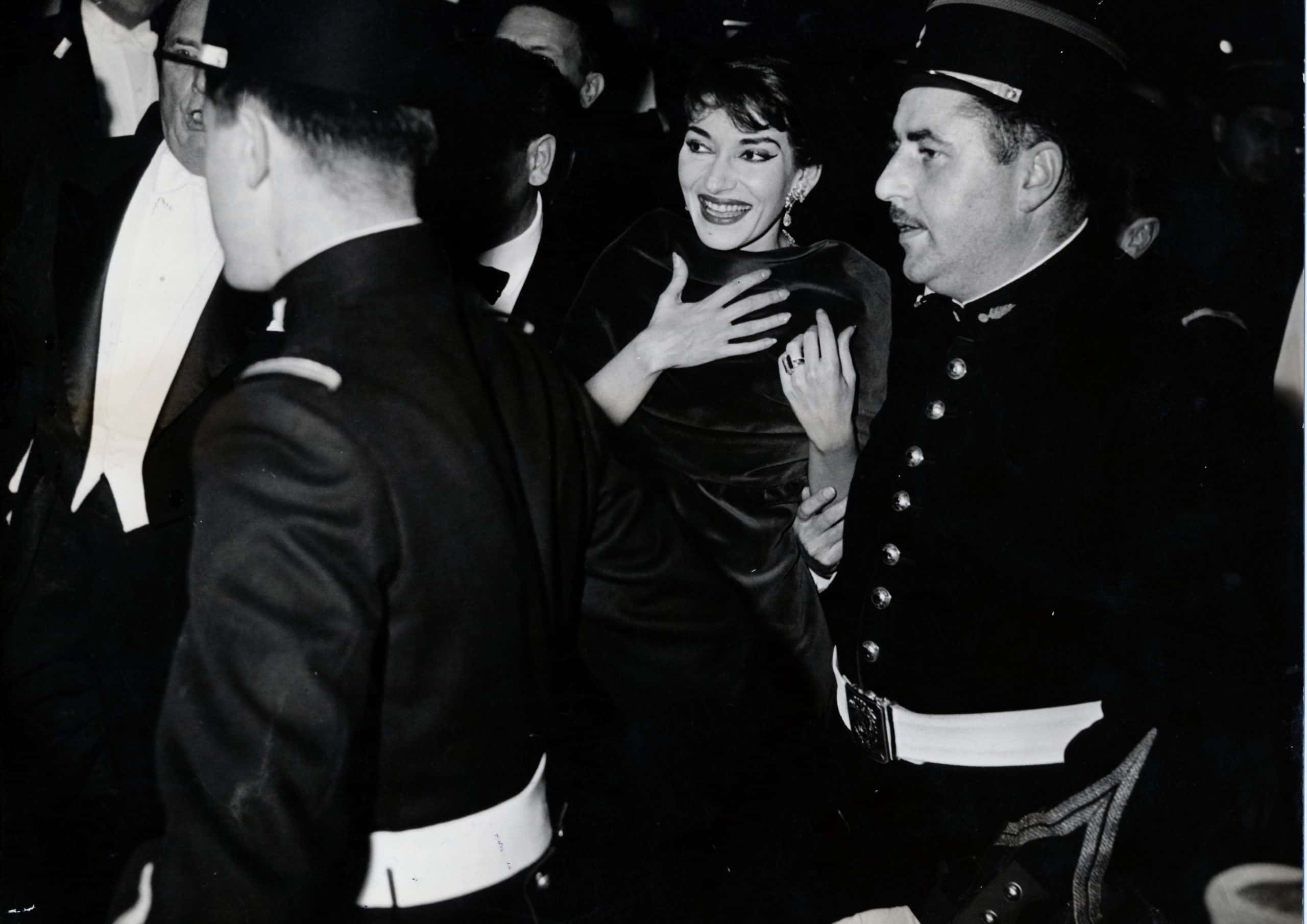 Mondadori Portfolio, Getty Images
Mondadori Portfolio, Getty Images
27. Men Wanted To Control Her
While recording the opera Lucia in Florence, Callas was out on a lunch break with the operatic baritone Tito Gobbi and her old mentor Tullio Serafin. Unable to mind his own business or his own food, Serafin watched Callas eat and then informed her she was stuffing her face too much and letting herself go. When Callas protested that she wasn’t really all that heavy, her “friend” made an incredibly insulting suggestion.
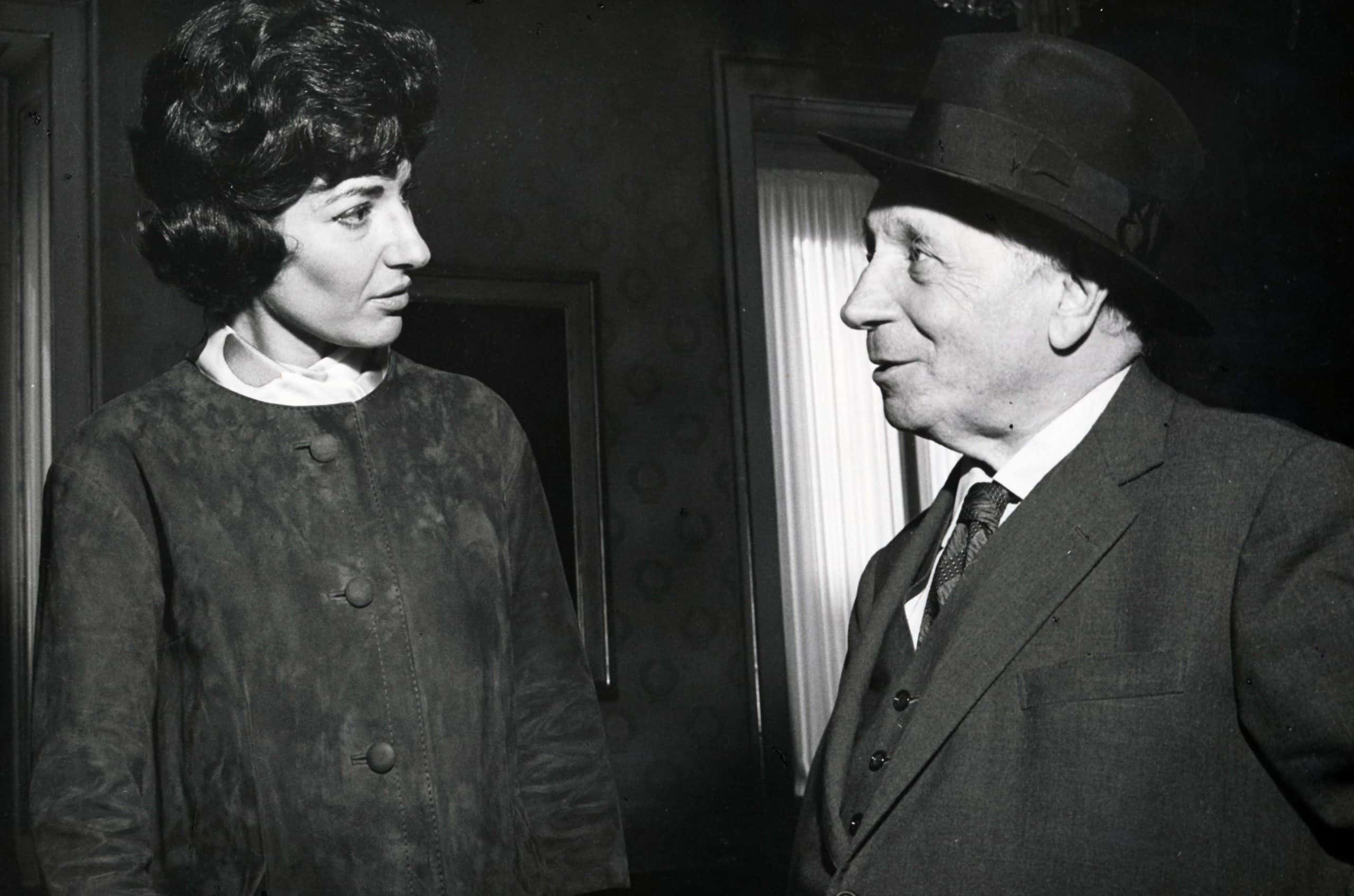 Mondadori Portfolio, Getty Images
Mondadori Portfolio, Getty Images
28. She Endured A Vicious Judgement
Instead of letting one of the most jaw-dropping divas do what she darn well pleased, Serafin cattily suggested that they put Callas’s protests to the test and have her step on the weighing machine just outside of the restaurant (side note: that should be illegal). Callas agreed, and when she saw the number on the scale, she found the answer "somewhat dismaying, and she became rather silent." After that, something broke.
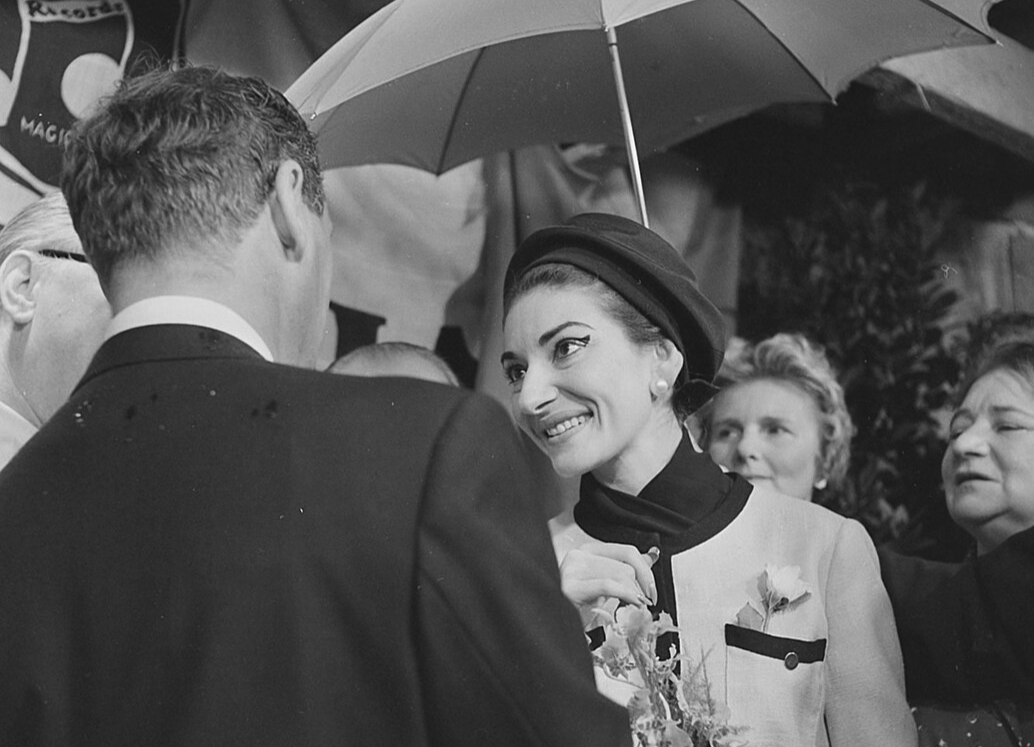 Fotopersbureau De Boer, CC0, Wikimedia Commons
Fotopersbureau De Boer, CC0, Wikimedia Commons
29. She Didn’t Think She Was Beautiful
Soon after this “friendly” altercation, Callas decided she needed to slim down. She claimed that because of her weight, “I was tiring myself” on stage. Then again, she had more heartbreaking reasons: She also said she was “tired of playing a game, for instance playing this beautiful young woman.” You know, as if she wasn’t beautiful already at a higher weight. Thanks again, Tullio. When Callas was through with her mission, the results were alarming.
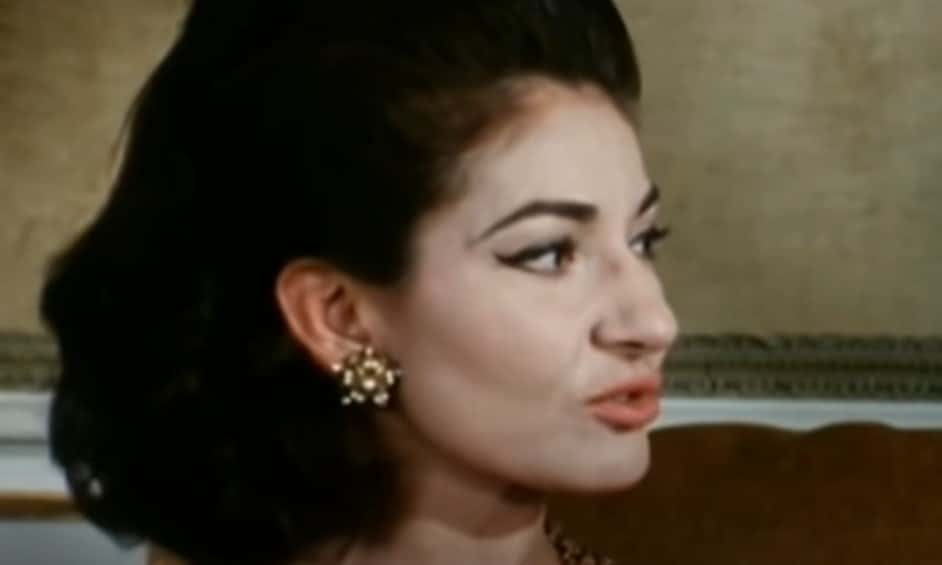 Isolde Films, Callas: A Documentary (1978)
Isolde Films, Callas: A Documentary (1978)
30. She Went On A Crash Diet
Whatever Maria Callas put her mind to was sure to happen, and she lost almost 80 pounds in a year, turning into a “slender and graceful figure” who one conductor called, "possibly the most beautiful lady on the stage.” But there was an ugly facet to her transformation. Besides the obvious pressures to be thin and thus “beautiful,” Callas’s weight loss was so intense and so quick, some claimed she’d swallowed a tapeworm, though Callas herself swore it was only a diet of salads and chicken. And that wasn’t all.
31. She Caused A Big Scandal
The burdens of the opera world were beginning to weigh on Callas, and a rash of new scandals pushed her to the brink. In 1958, Callas tried to bow out of a show at Rome’s opera house, pleading sickness and asking for an understudy. The management, who were expecting Italy’s president that night, simply told her, “No one can double Callas” and insisted that the show must go on. Callas pushed through, but it ended in utter disaster.
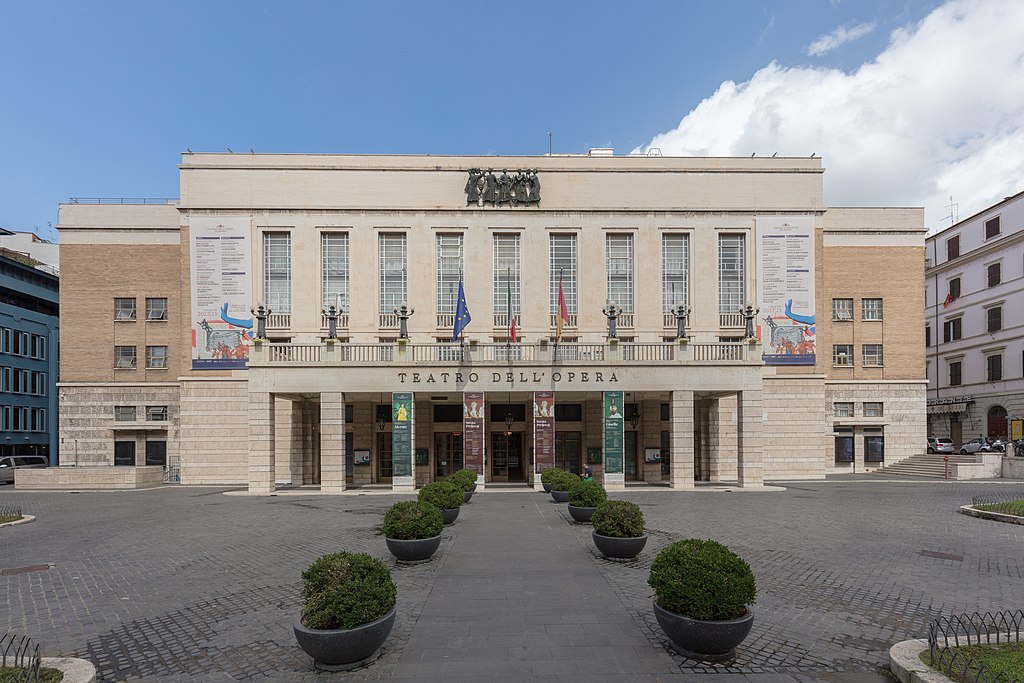 Diego Delso, CC BY-SA 4.0, Wikimedia Commons
Diego Delso, CC BY-SA 4.0, Wikimedia Commons
32. She Abandoned The President
Although Callas went on in front of the president as scheduled, the sick woman had to throw in the towel after the first act, launching the theatre into pandemonium. The media accused the diva of storming out on the head of state, and newsreels soon began mocking her by saying, "If you want to hear Callas, don't get all dressed up. Just go to a rehearsal; she usually stays to the end of those.”
And just when Callas thought she was going to catch a break, it went from bad to worse.
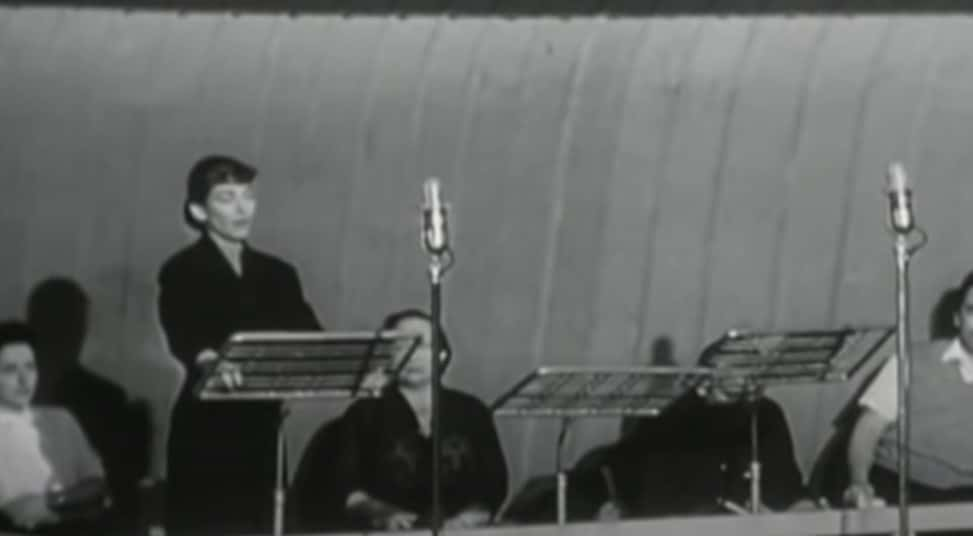 Isolde Films, Callas: A Documentary (1978)
Isolde Films, Callas: A Documentary (1978)
33. The Met Fired Her
1958 was a very bad year for Maria Callas. Later in the year, she was in negotiations with the Met for their next season when she hit a big bump in the road. Seemingly out of nowhere, Met general manager Rudolf Bing unceremoniously fired her and terminated her contract—right before she was due to open another opera, Medea, in Dallas.
As usual, the press got word of it and printed “Bing Fires Callas” in headlines for all to see. The thing is, Callas knew just what to do.
34. She Got A Delicious Vengeance
You don’t get called a “diva” for nothing, and Callas more than earned the moniker. That night at Medea, Callas showed up dressed to the nines. Or, as her friend put it, "She came to the theater, looking like an empress: she wore an ermine thing that draped to the floor, and she had every piece of jewellery she ever owned.” But lest you forget, Callas wasn’t just looks.
She also spoke to the audience beforehand, telling them, “'You all know what's happened. Tonight, for me, is a very difficult night, and I will need the help of every one of you.” With the crowd firmly on her side, Callas then gave a performance of Medea that was “historical.” If only the good times lasted.
35. She Lost Her Voice
Around the same time that Callas lost the weight of roughly half a person, she also lost something much more precious: control of her voice. Though no one can know for sure what caused this, many blame her weight loss for changing her body and not providing her with enough breath support. Whatever the truth, her voice steadily began to lose its fullness and, as one of Callas’s fellow sopranos wrote, “I don't think that anyone who heard Callas after 1955 really heard the Callas voice.”
It was as painful and harrowing a loss as the diva could have ever received…and maybe this is why she began to destroy her life from the inside.
36. She Met An International Playboy
In 1957, Callas was attending a glamorous party when she met the Greek shipping tycoon Aristotle Onassis. Although she was still married to Giovanni Battista Meneghini, Callas couldn’t resist the brash, silver-tongued Onassis, and the pair soon began a steamy affair. Correction: A steamy, very public affair. They didn’t bother to hide it from the world, and Callas certainly didn’t show her husband any mercy.
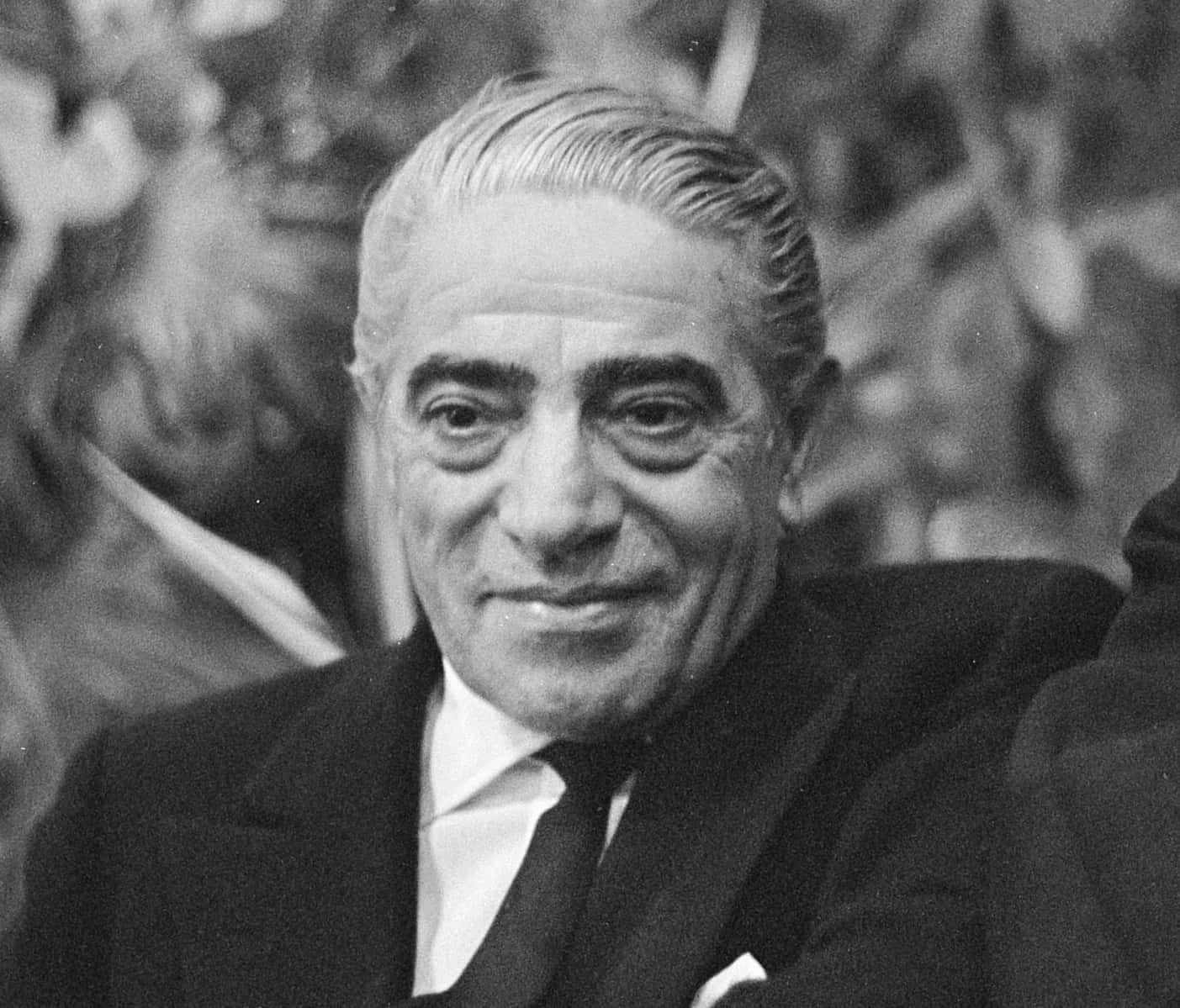 Pieter Jongerhuis, CC BY-SA 3.0, Wikimedia Commons
Pieter Jongerhuis, CC BY-SA 3.0, Wikimedia Commons
37. She Destroyed Her Marriage
After carrying on with Onassis in a variety of yachts and European destinations for nearly two whole years, Callas called her marriage quits completely and left her husband Meneghini, simultaneously ending his management of her career. At 34 years old, Callas was experiencing her mid-life crisis almost a decade early, and she wasn’t stopping the spiral now. Not in the slightest.
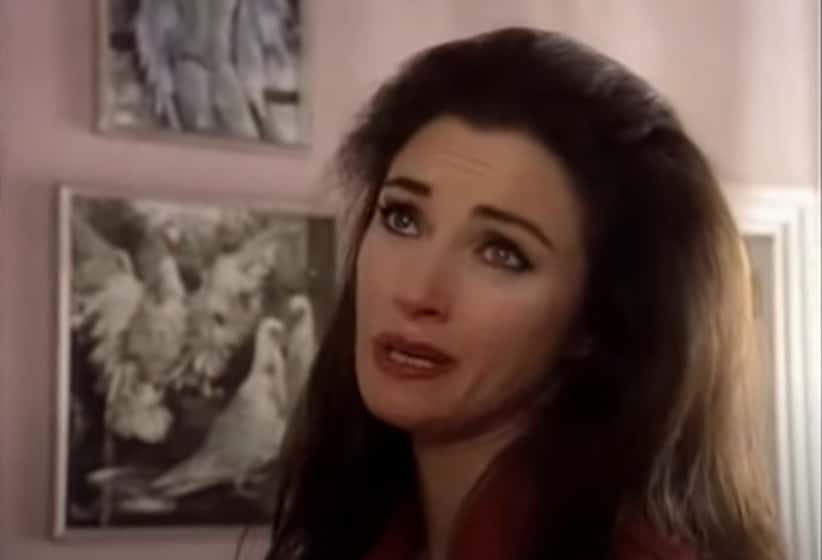 TVE, Onassis: The Richest Man in the World (1988)
TVE, Onassis: The Richest Man in the World (1988)
38. She Made A Terrifying Sacrifice
After her controversies and vocal difficulties, Callas all but stopped performing once she fell into Aristotle Onassis’s bed. When her friend, director Franco Zeffirelli, asked Callas why she seemed to be drifting away from her destiny at the opera, she told him, "I have been trying to fulfill my life as a woman.” Yep, Callas gave up nearly everything to be with Aristotle—which makes it all the more heartbreaking that their relationship was a bona fide nightmare.
39. She May Have Had A Secret Love Child
Callas and Onassis were inseparable for over a decade, but their love was full of tragedies still half-secret from the world. Although Callas’s ex-husband Meneghini claimed she was unable to bear children, there is evidence that Callas actually got pregnant with Onassis and either aborted the baby or, in a much more dramatic but less proven theory, actually gave birth to a son who passed hours later. Still, all this drama was only preparation for the infamy to come.
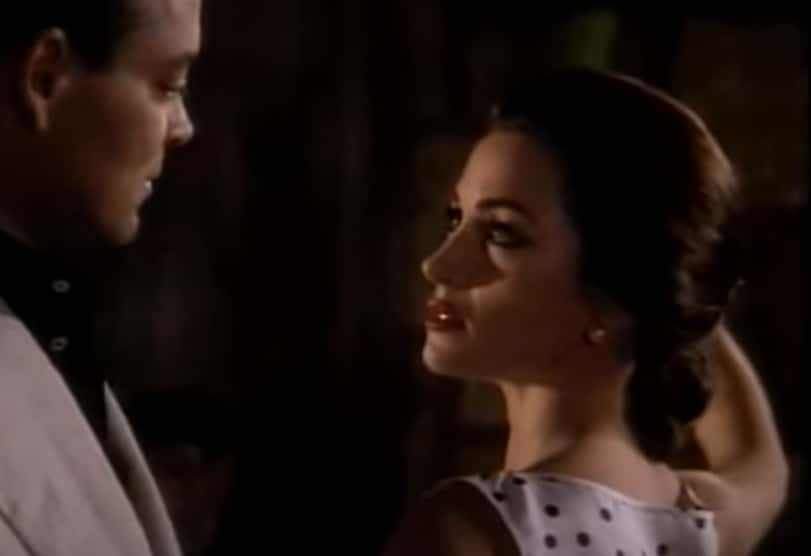 TVE, Onassis: The Richest Man in the World (1988)
TVE, Onassis: The Richest Man in the World (1988)
40. Her Lover Two-Timed Her
In 1963, Aristotle Onassis went on one of his many yacht trips—but this time, he didn’t bring his long-term girlfriend Callas. Instead, Onassis had invited the current First Lady of the United States, Jackie Kennedy, on the boat for an intimate trip. Ostensibly, it was to help Jackie get over the loss of her son Patrick, who had just died in infancy. Well, Aristotle was just a stand-up man trying to help a lady out, right? Wrong. Very, very wrong.
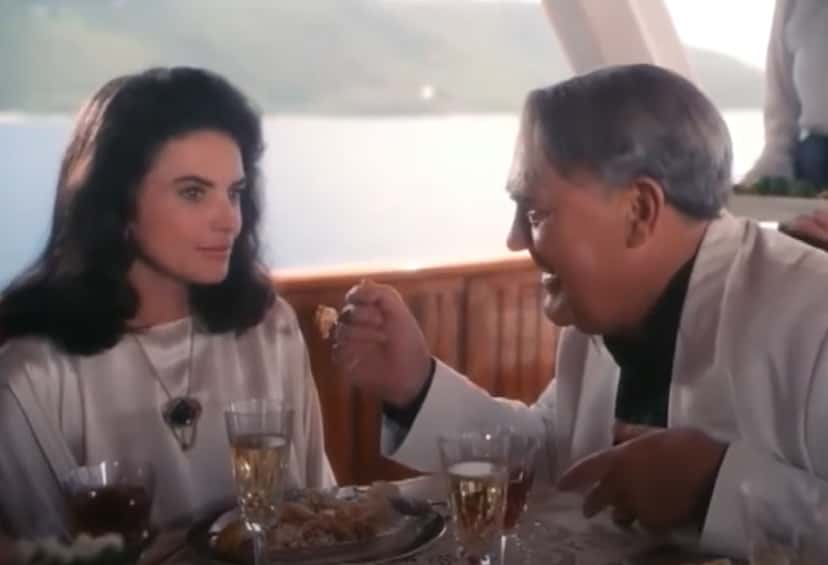 NBC, A Woman Named Jackie (1991)
NBC, A Woman Named Jackie (1991)
41. She Watched The Man She Loved Marry Someone Else
For years, Onassis waited in the wings for Jackie, even past her husband John F. Kennedy’s assassination, until 1968—when he dealt Maria Callas the ultimate betrayal. Callas and Onassis had never married…so it was all too easy for the shipping magnate to scoop up Jackie and formally propose to her, leaving the diva in the matrimonial dust. Except, you should never count Callas out.
42. Her Lover Wanted Her Back
Today, many believe that Onassis didn’t so much love Jackie as want to possess “the most famous woman in the world.” In reality, Callas still had his whole heart, and Aristotle slunk back to Maria mere days after his nuptials to Jackie, begging her to recommence their affair under cover of night. Callas’s reaction to this indecent suggestion was half agony, half ecstasy.
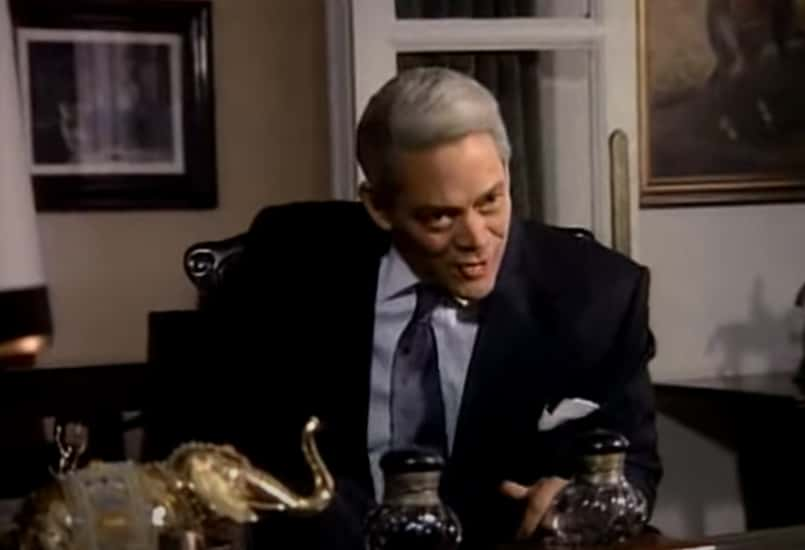 TVE, Onassis: The Richest Man in the World (1988)
TVE, Onassis: The Richest Man in the World (1988)
43. She Became The Other Woman
At first, like many self-respecting women, Callas told Onassis to get the heck away from her. But then her lover took it up a disturbing notch. Nearly unhinged with passion, he played the manipulative jerk card and swore he would crash his Mercedes into Callas’s apartment if she continued to refuse him. Sadly, this is what convinced Callas she had to have him back, and they reignited their flame before Jackie had unpacked her bridal trunk. Then the games really began.
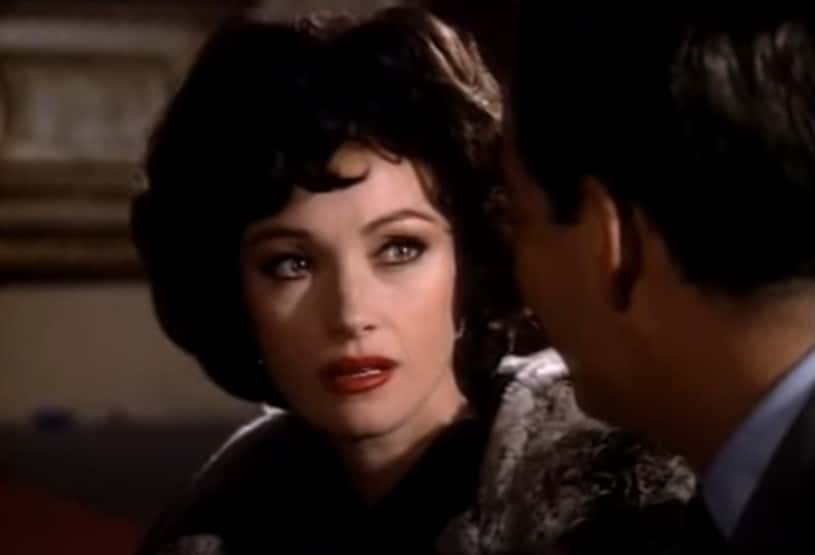 TVE, Onassis: The Richest Man in the World (1988)
TVE, Onassis: The Richest Man in the World (1988)
44. She Had A Very Public Affair
According to those closest to Callas and Onassis, the Greek pair met up every month like clockwork to relieve their illicit desires—a regular absence that the new Jackie O couldn’t help but notice. Though to be fair, just like their earlier dalliance, the whole world noticed the Onassis and Callas reunion and reported on their every move. Before long, Callas was in deep trouble.
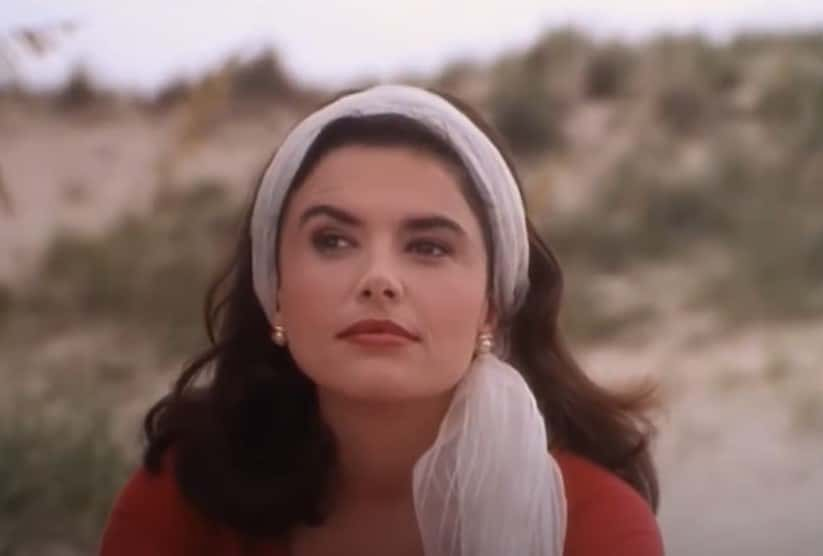 NBC, A Woman Named Jackie (1991)
NBC, A Woman Named Jackie (1991)
45. She Was In A Game Of Cat And Mouse
When the paparazzi caught Onassis and Callas getting cozy at the Parisian restaurant Maxim’s while Jackie was away in America, the press had a field day. It’s also when Jackie enacted her petty revenge. Unwilling to let Callas get the match point, Jackie jetted right back around to Europe and very publicly had her own dinner at Maxim’s with Onassis two days later.
And this jockeying for power was far from over.
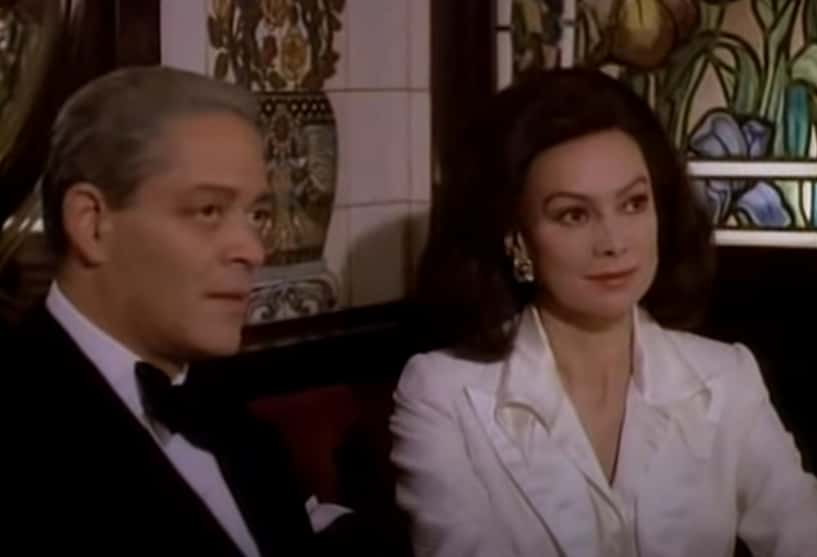 TVE, Onassis: The Richest Man in the World (1988)
TVE, Onassis: The Richest Man in the World (1988)
46. She Got What She Always Wanted
As the years wore on, Aristotle Onassis had a change of heart about his marital decisions—just not in the way you might think. Instead of viewing his mistress Callas as a dirty little secret, he began to deeply regret ever marrying Jackie, and felt that he had betrayed Maria in doing so. (He was right). Accordingly, he initiated divorce proceedings against the former First Lady. Yet this story doesn’t have a happy ending.
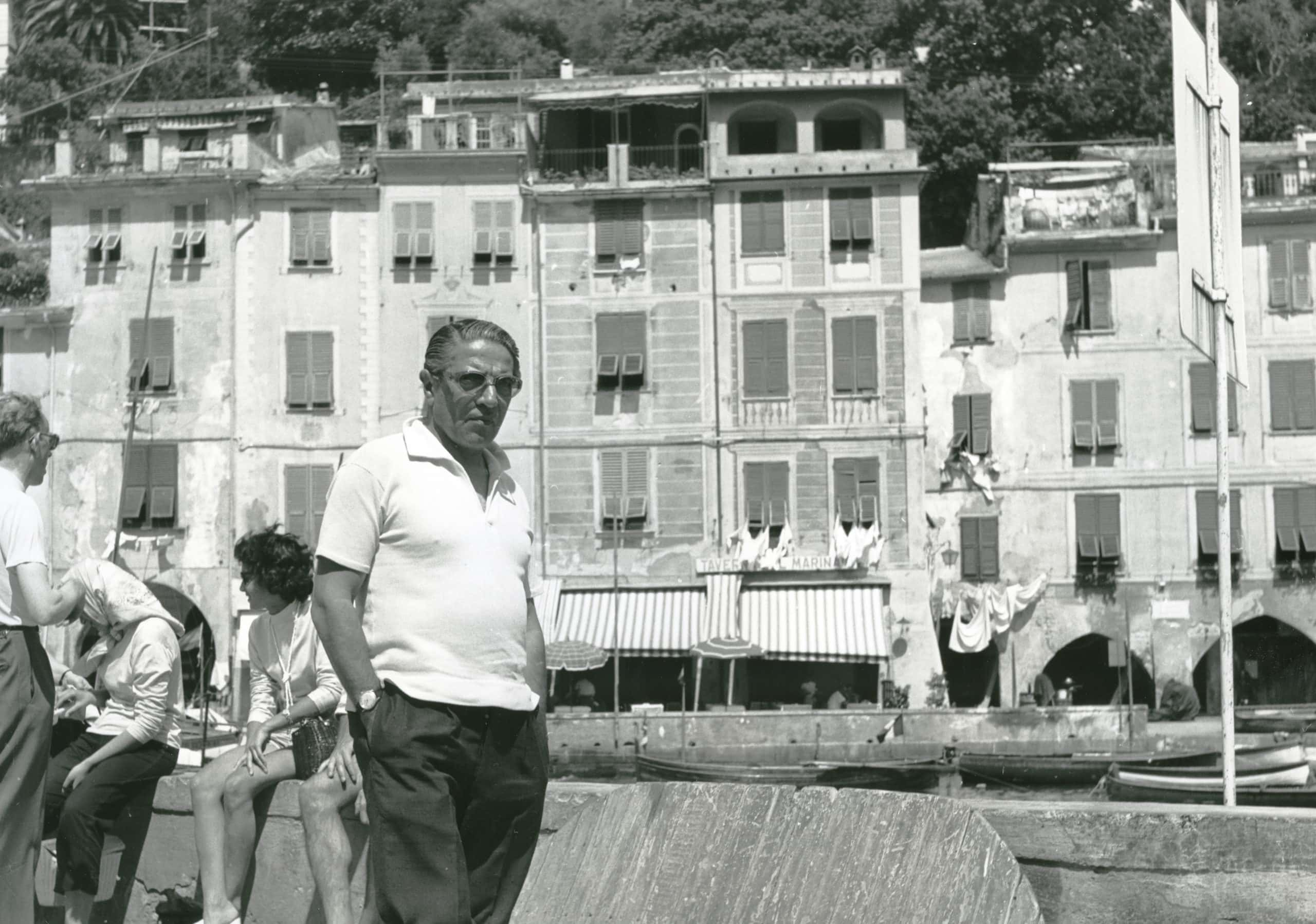 Vittoriano Rastelli, Getty Images
Vittoriano Rastelli, Getty Images
47. Her Lover Was In Terrible Danger
We’ll never know if Onassis intended to finally make Callas his wife; soon after starting the divorce paperwork, the magnate fell gravely ill. He had suffered from the neurological disorder myasthenia gravis for years, and in 1975, medics rushed him to a hospital for what would be his final visit. Jackie’s reaction was ice cold—and Maria’s was traitorous.
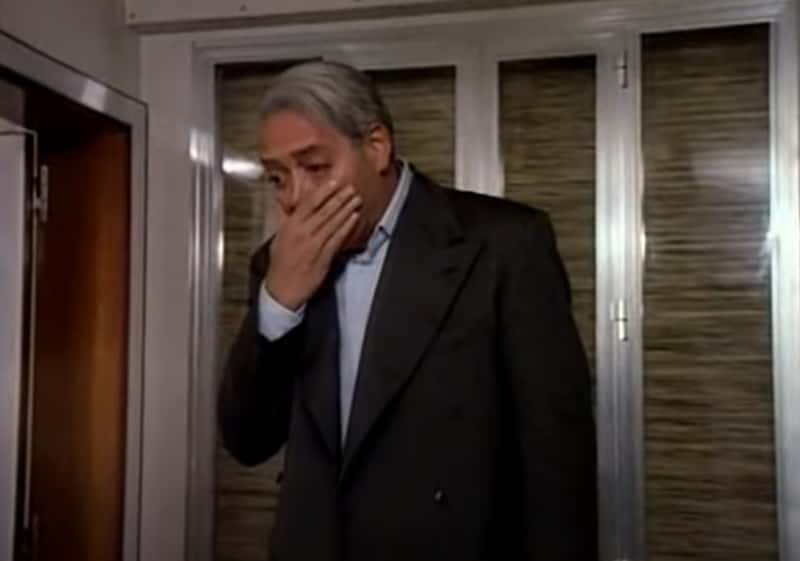 TVE, Onassis: The Richest Man in the World (1988)
TVE, Onassis: The Richest Man in the World (1988)
48. She Couldn't See Her Lover
With Onassis on his deathbed, Jackie showed just how fed up she was. She refused to even visit him, instead going on a very pointed holiday to Aspen. Even so, she made sure to twist the knife into Callas’s side. Since she was still officially Mrs. Onassis, Jackie had a lot of legal power, and she demanded that nobody let Maria in to see the dying man.
Did that stop the tigress Maria Callas? Heck no.
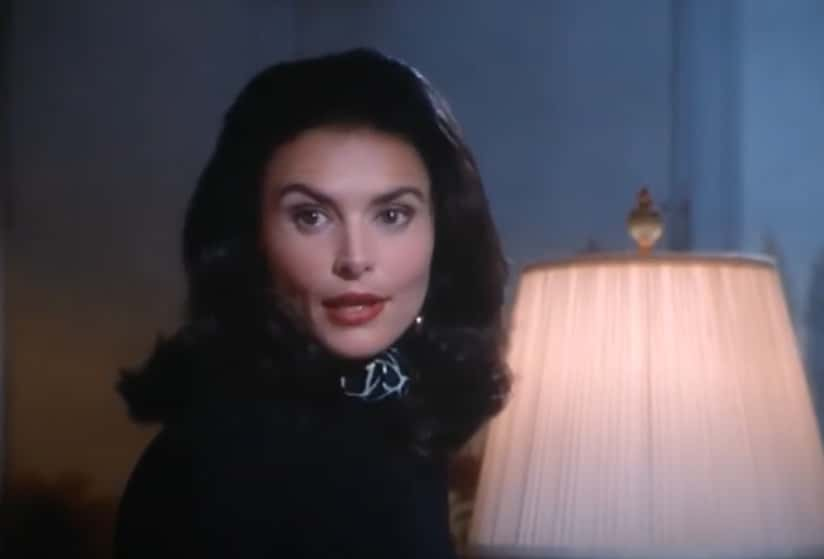 NBC, A Woman Named Jackie (1991)
NBC, A Woman Named Jackie (1991)
49. She Went Undercover
Callas was just as devoted to Onassis as he was to her, and she didn’t let the First Lady ruin her last goodbye to the man she loved. Equipped with her charms, connections, and her own star-power, she managed to secret herself up through a service elevator and into Onassis’s room. The opera singer then sat with the tycoon for an hour as he lay in a coma, counting down the precious minutes.
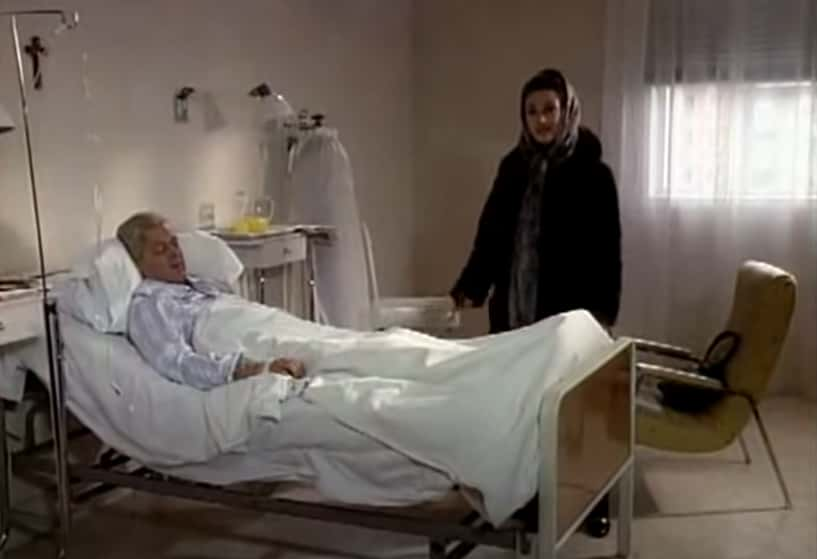 TVE, Onassis: The Richest Man in the World (1988)
TVE, Onassis: The Richest Man in the World (1988)
50. She Was Aristotle Onassis’s “One True Love”
By this point, everybody knew that Maria Callas was the one woman in Aristotle Onassis’s life, and historians have even called Callas his “one true love.” His driver Yaikinto Rossa also admitted that “She was his true wife, though they never married." Yet all this could have hardly comforted Callas when Onassis’s end finally came. Because let me tell you, it was awkward.
 TVE, Onassis: The Richest Man in the World (1988)
TVE, Onassis: The Richest Man in the World (1988)
51. She Never Got His Money
Just days after Callas’s secret meeting with him, Aristotle Onassis passed in the hospital. Callas was devastated—but she had one more brutal injury to endure. Jackie still had an immense amount of sway on the international stage, so Onassis’s family agreed to give her an enormous settlement of $26 million, while Callas got absolutely nothing.
Still, that’s not what hurt her the most.
52. She Became A Recluse
Without Onassis, Callas became a shell of her former fiery self. After all, his entrance into her life had coincided with the end of her opera career and the fading of her voice. Without the boisterous tycoon around, the diva’s existence became quiet and reclusive; she still lived in Paris, but very few saw her stray outside the radius of her apartment.
According to one source, she now spent her time pitifully listening to her old recordings and reliving her glory days.
53. She Was A True Diva
Callas reportedly lived a diva lifestyle even behind the scenes. She reveled in facials and creams, and well as fashions and footwear, undergoing many expensive treatments and owning an enviable wardrobe full of almost 200 dresses alone. Perhaps most infamously, people said that she refused to wash her gloves. Instead, she would just throw them out when they got dirty and then get a brand new pair.
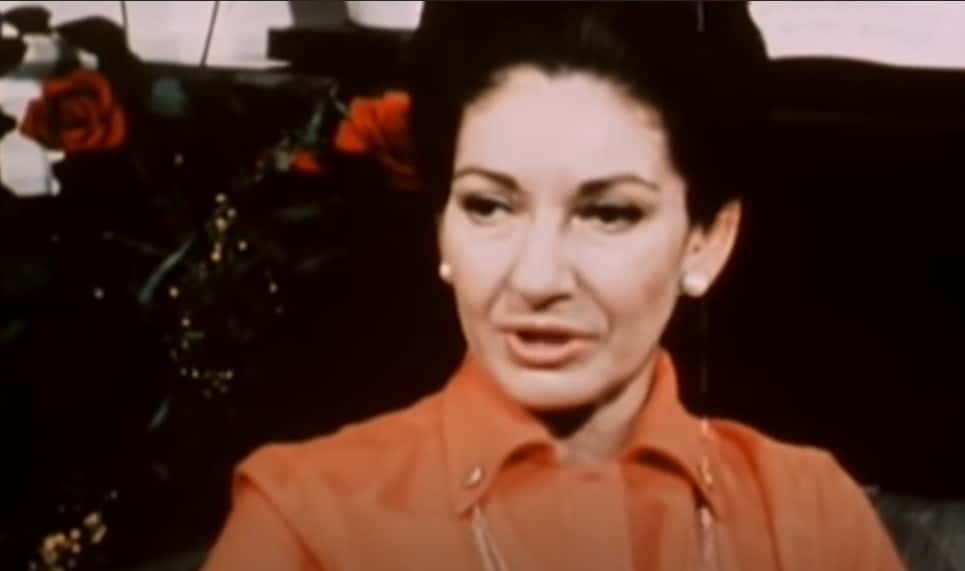 Isolde Films, Callas: A Documentary (1978)
Isolde Films, Callas: A Documentary (1978)
54. She Had A Dramatic Death
In the end, it really was as if Callas couldn’t live without Onassis, because she followed closely behind him into the grave. On September 16, 1977—just two years after Aristotle’s passing—Callas died of a heart attack at the age of only 53. It was a sudden, premature end that was fitting for a tragic opera, and thus fitting for one of opera’s most legendary divas.
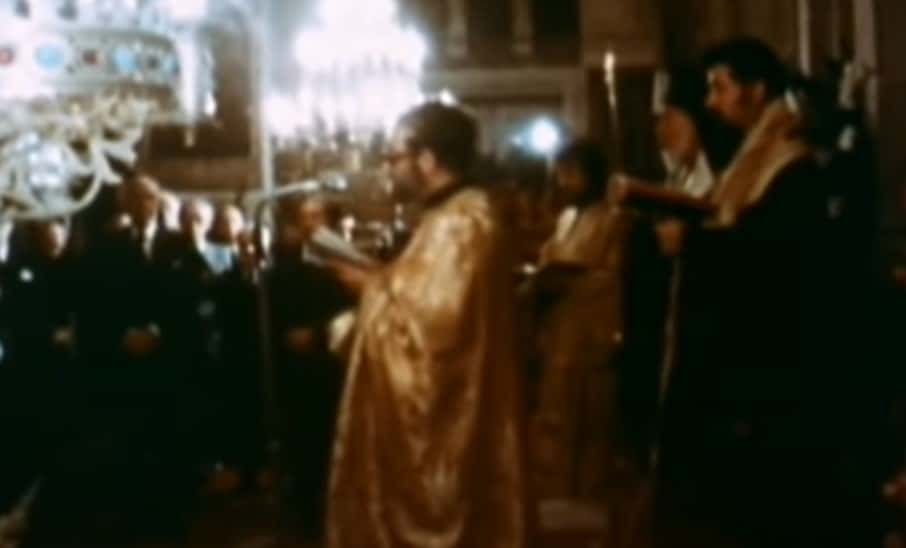 Isolde Films, Callas: A Documentary (1978)
Isolde Films, Callas: A Documentary (1978)
55. She Had A Strange Reason For Loving Onassis
We may never really know why Maria Callas and Aristotle Onassis came together as they did, but Callas had her own idea about the matter. As she once confided to the Greek film executive Spyros Skouras, when she first met Onassis and began to fall in love with him, "There [was] just a natural curiosity; after all, we were the most famous Greeks alive in the world."
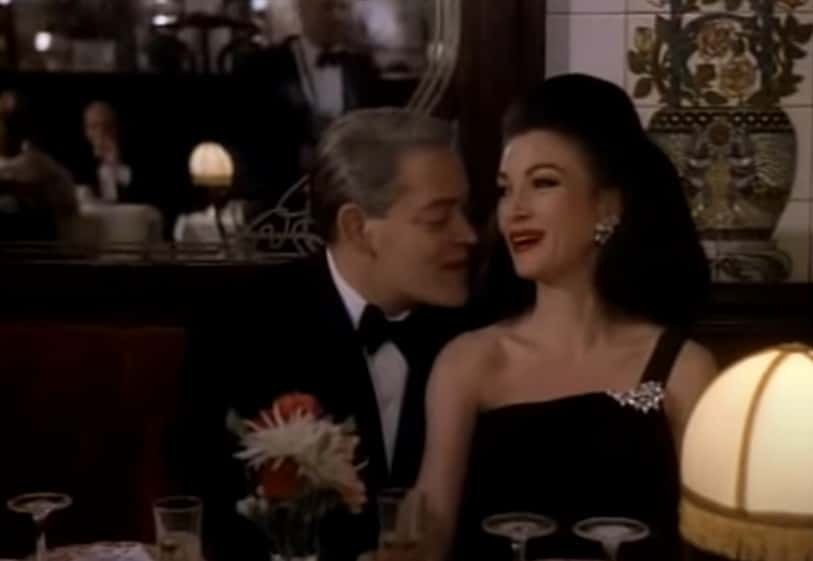 TVE, Onassis: The Richest Man in the World (1988)
TVE, Onassis: The Richest Man in the World (1988)
56. She Was A Difficult Woman
Maria Callas had an untold effect on her peers, both for her immense flaws and her incredible talents. She was, after all, a prototype of the “difficult” diva. Yet it was Rudolf Bing—the Met manager who fired her—who once said that her temperamental reputation was inextricable from her genius. As he put it, it was "because she was so much more intelligent. Other artists, you could get around. But Callas you could not get around. She knew exactly what she wanted, and why she wanted it.”
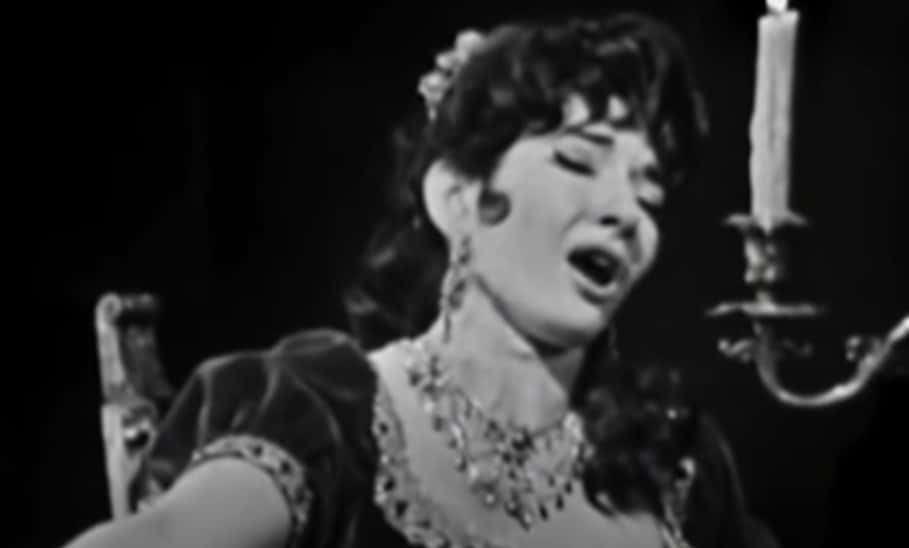 Isolde Films, Callas: A Documentary (1978)
Isolde Films, Callas: A Documentary (1978)
57. She Was A Tormented Genius
Indeed, in many ways, Maria Callas was a stereotypical tormented genius—at least in how we choose to remember her. When one of her friends said to her, “It must be very enviable to be Maria Callas,” the singer responded, "No, it's a very terrible thing to be Maria Callas, because it's a question of trying to understand something you can never really understand."
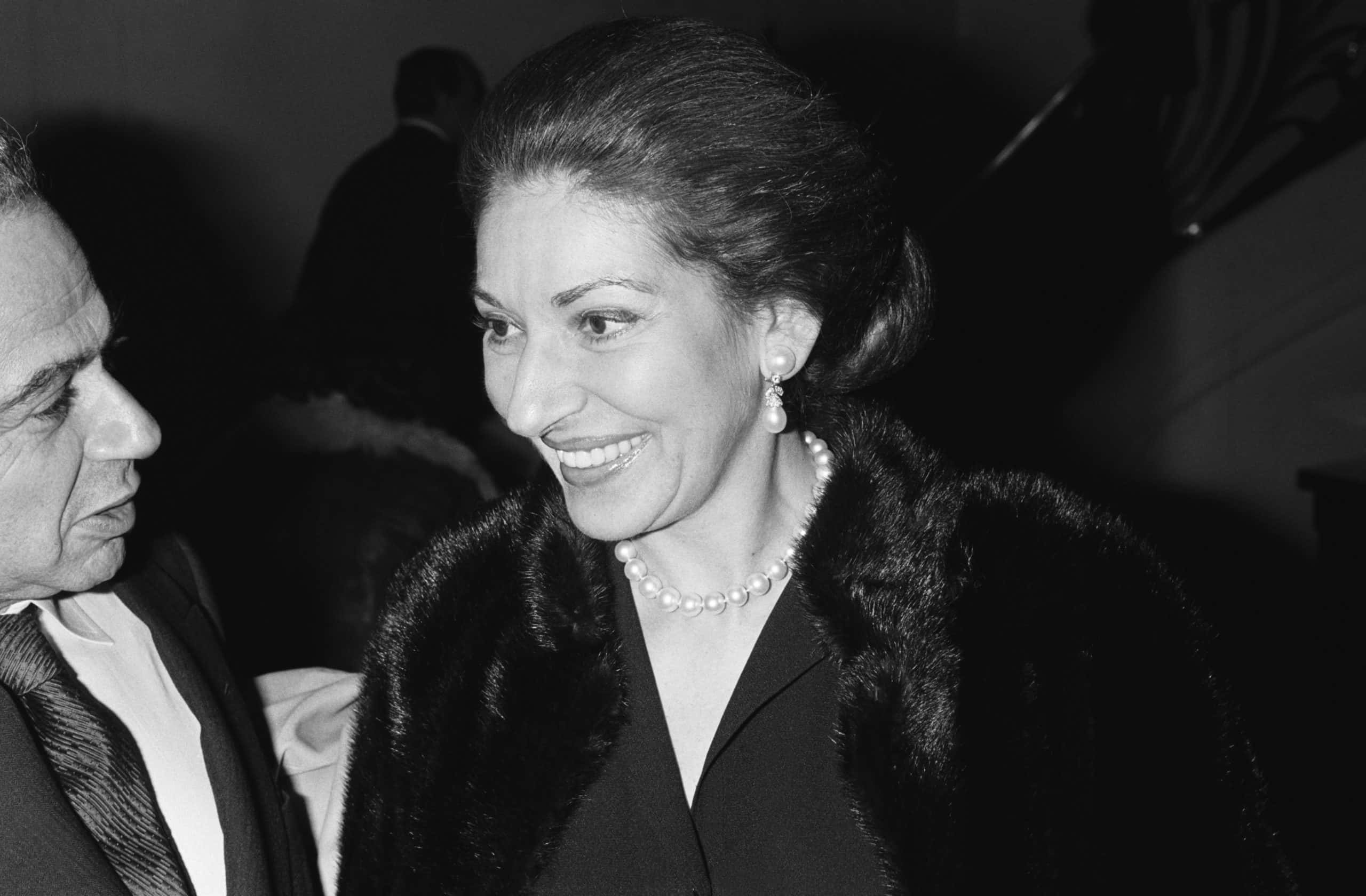 Pool LOCHON/MAOUS, Getty Images
Pool LOCHON/MAOUS, Getty Images
58. She Had One Last Barb For Jackie
Time certainly didn’t heal Jackie O’s and Maria Callas’s wounds. In 1974, Callas sat down with the legendary Barbara Walters, and she wasn’t about to let the opportunity slip by to cause a little drama. When Walters asked about Callas’s relationship with Jackie, the diva had the perfect reply. She answered with a chilly, "I don't know her. I've never met her,” then changed the subject. Sorry Mariah, Maria did it first.
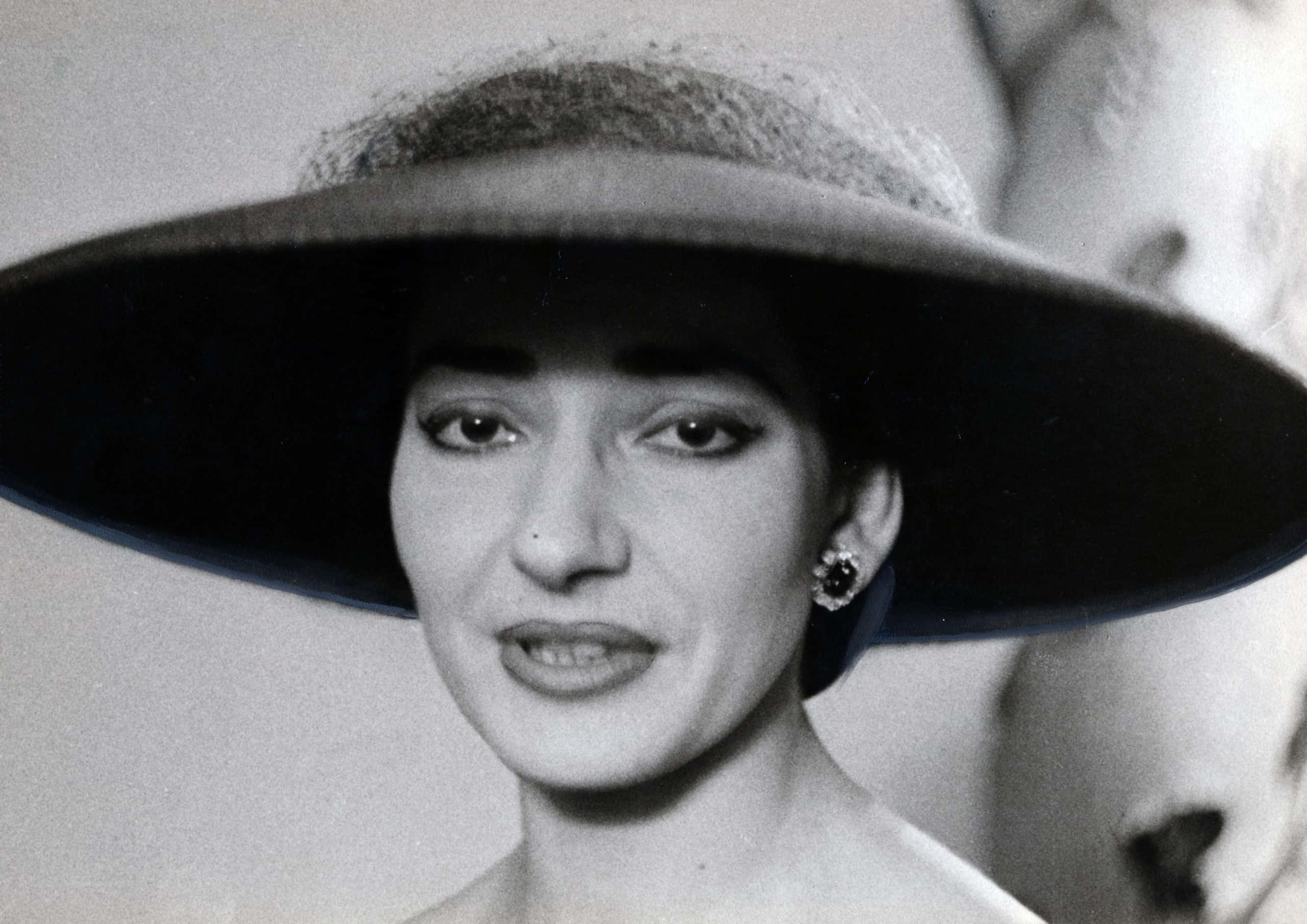 Mondadori Portfolio, Getty Images
Mondadori Portfolio, Getty Images

